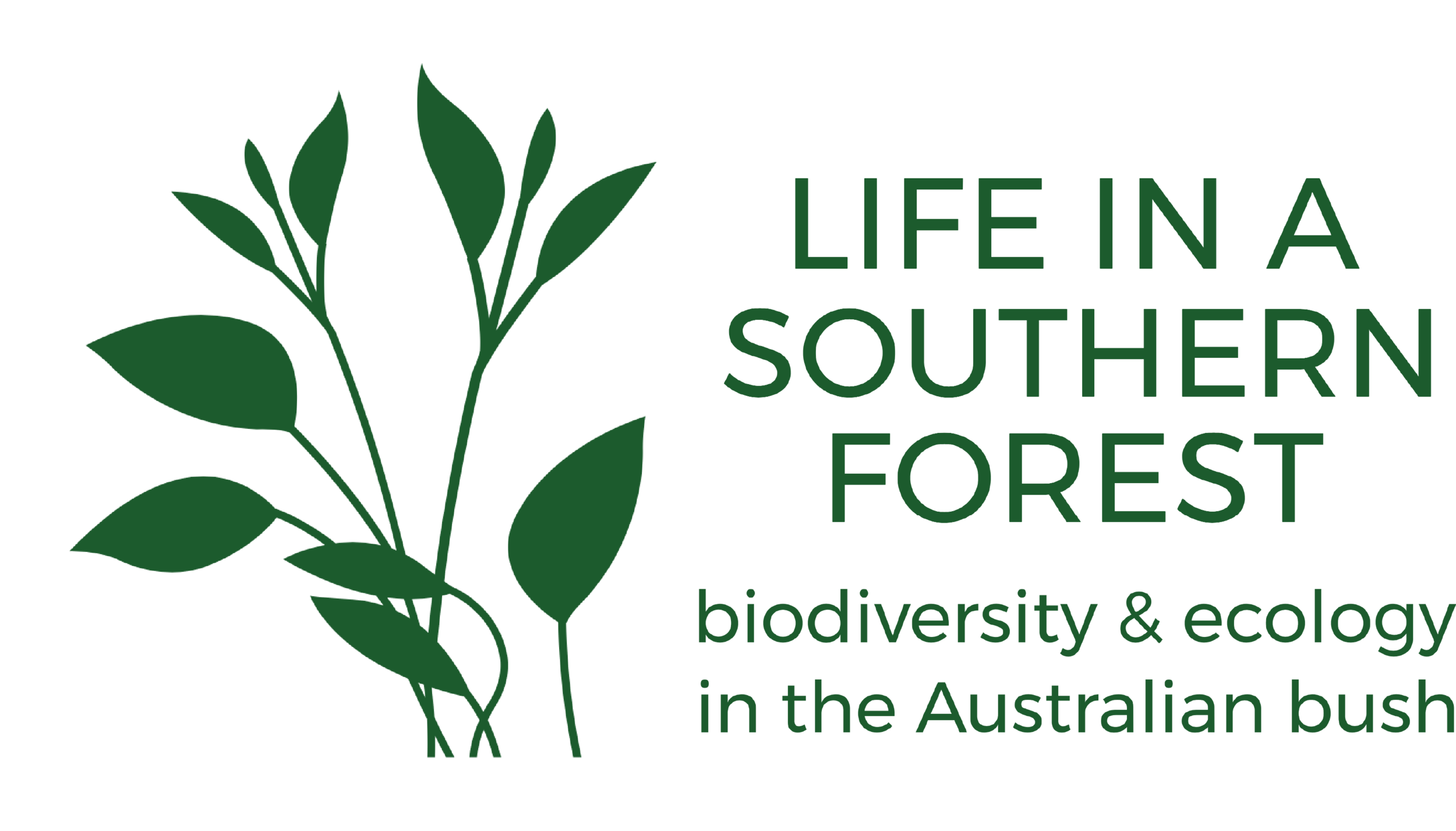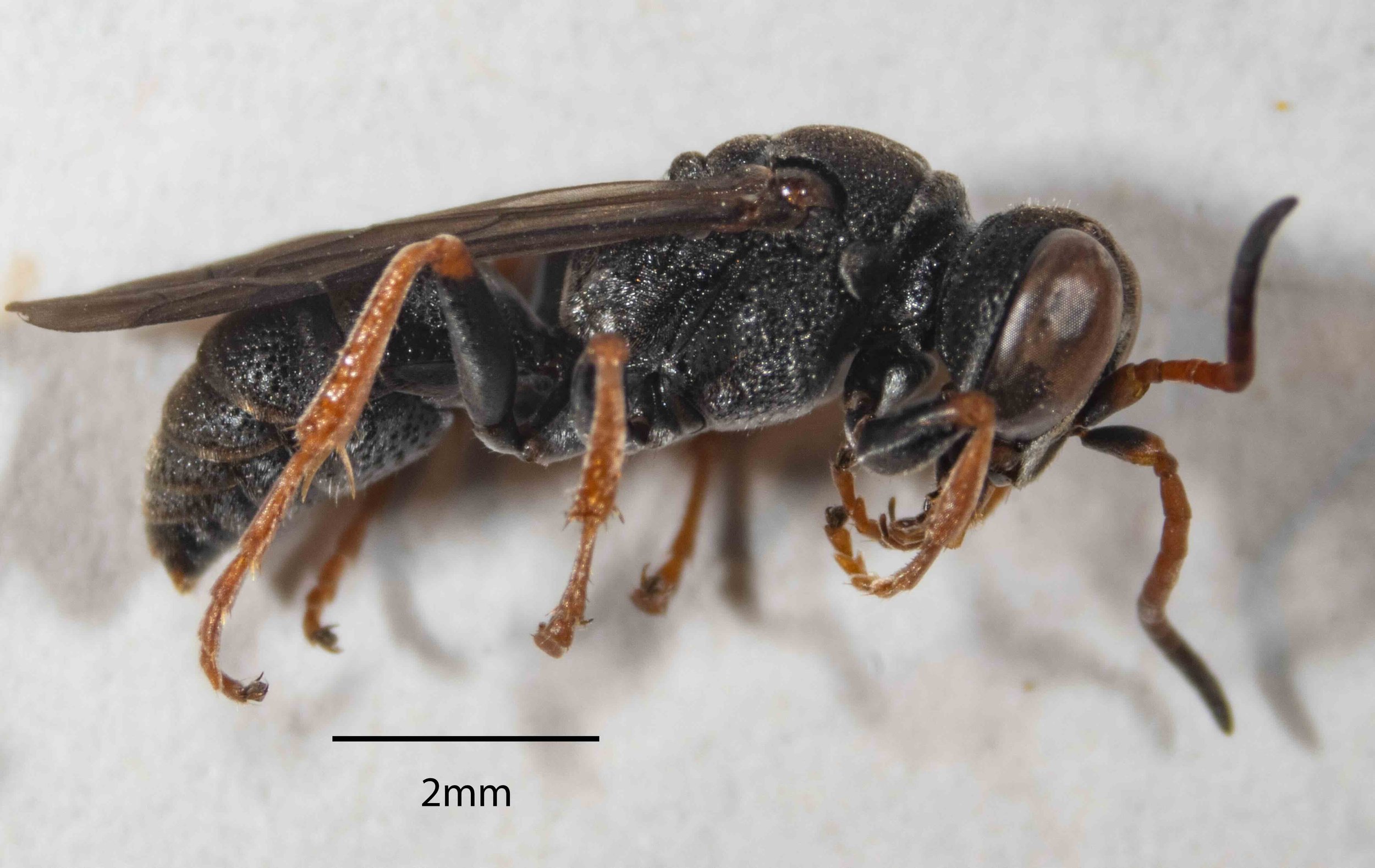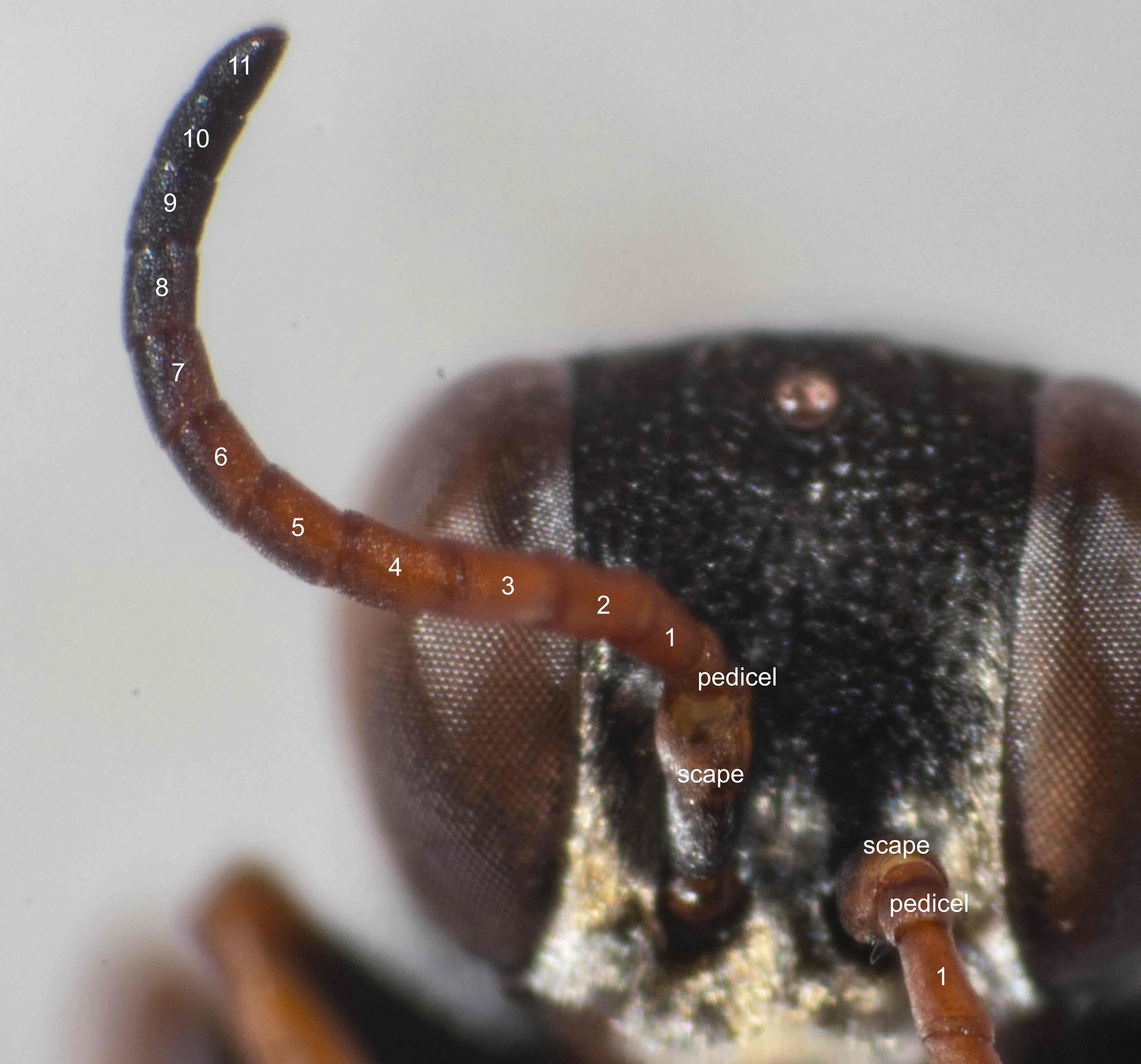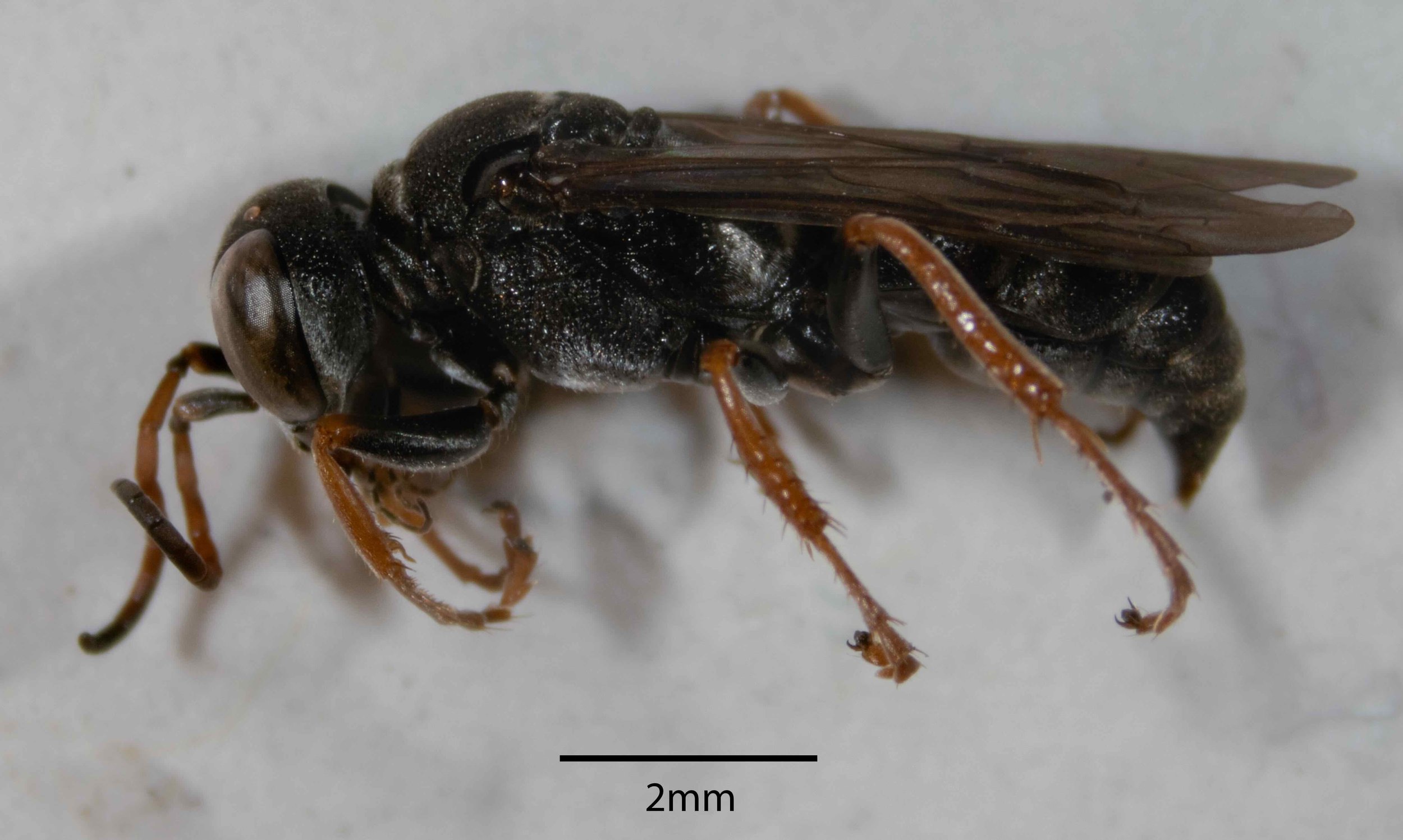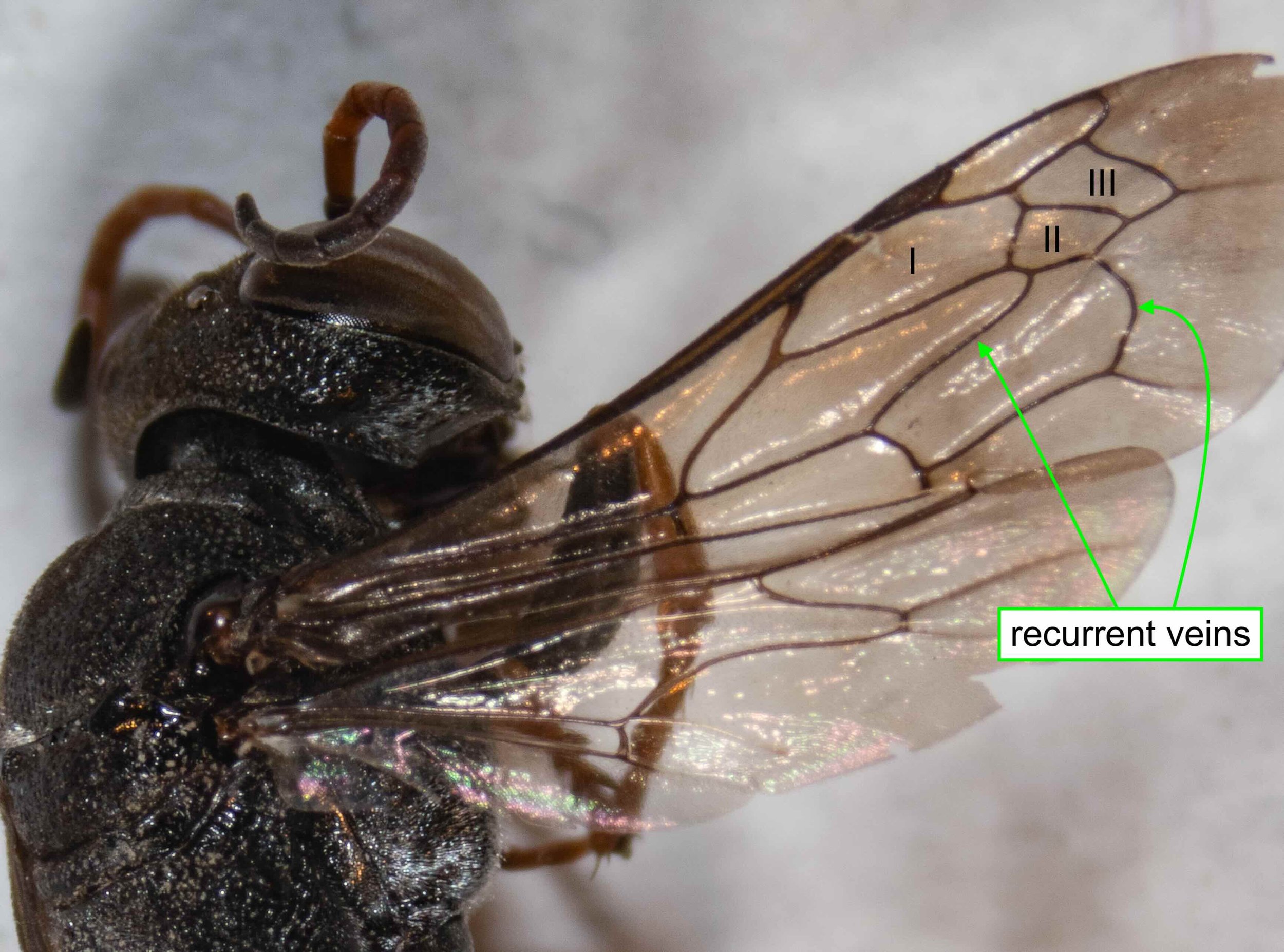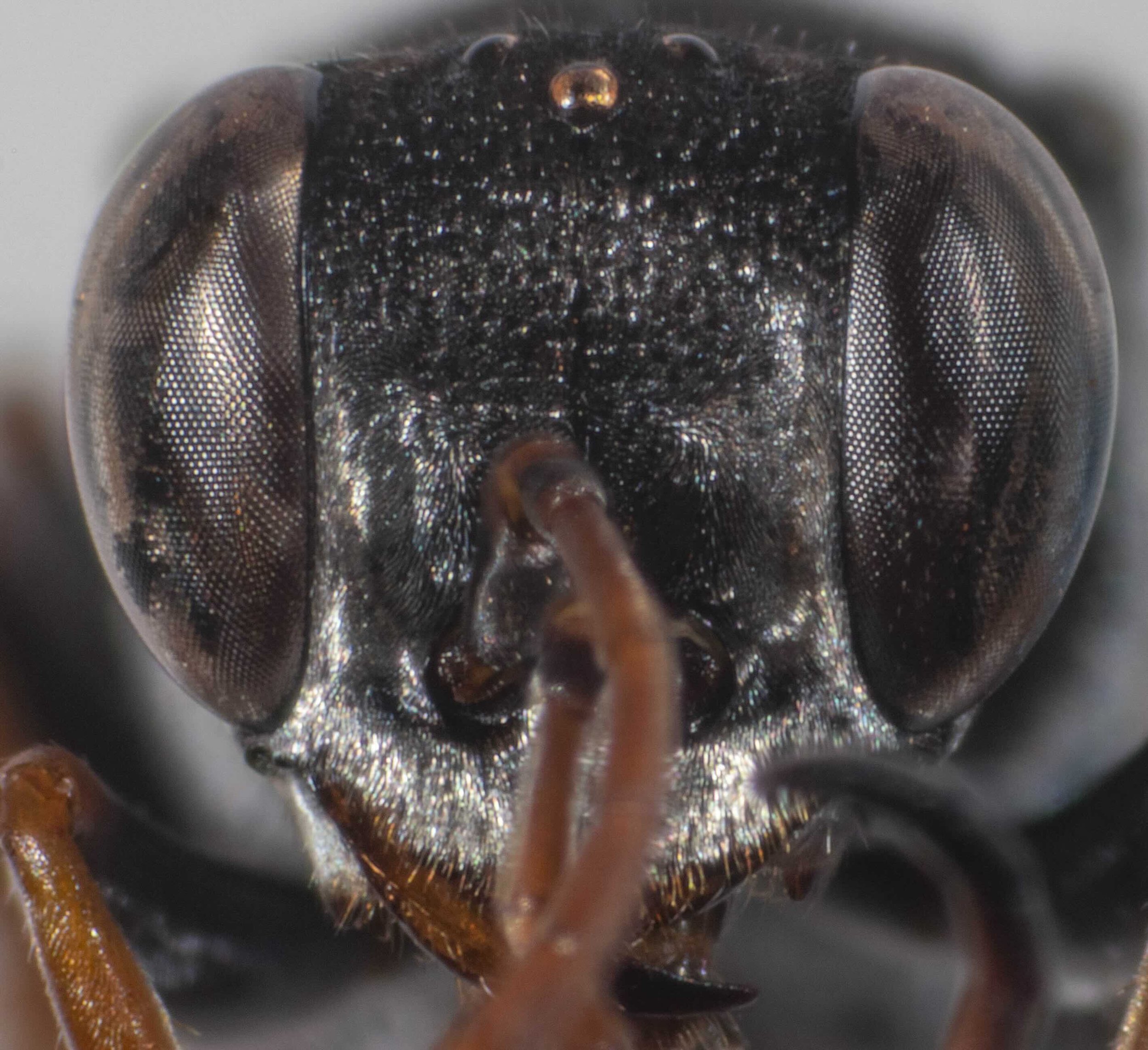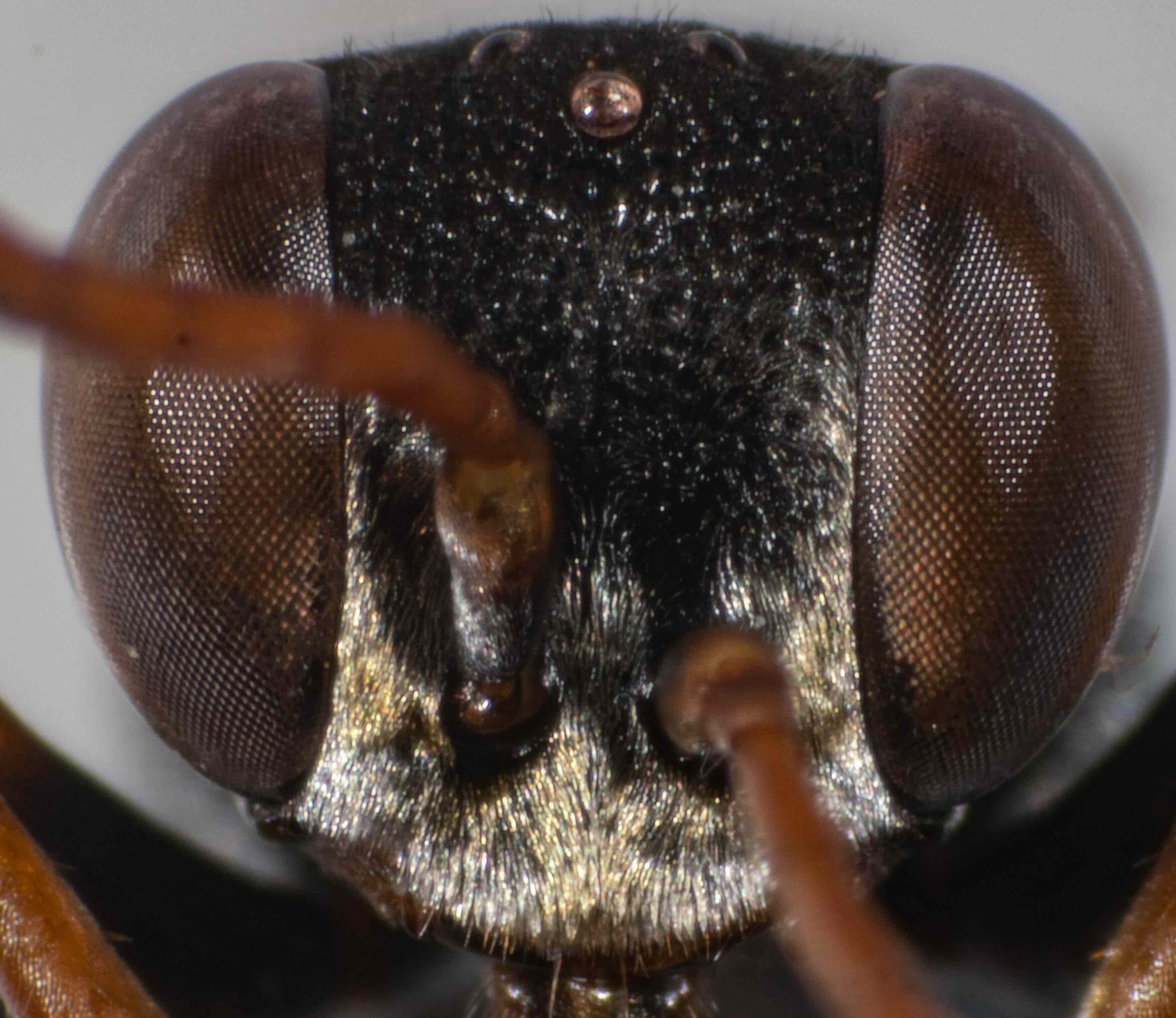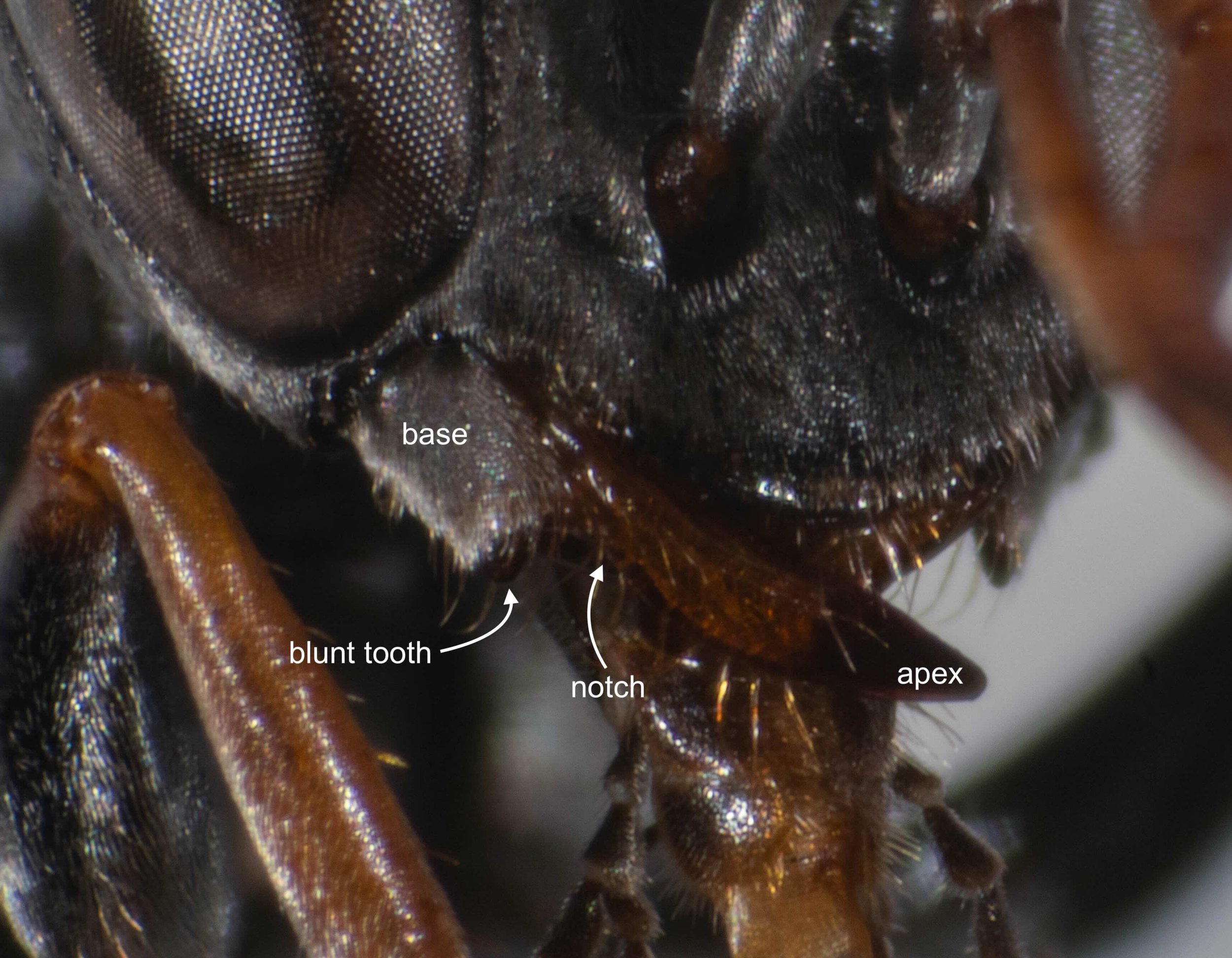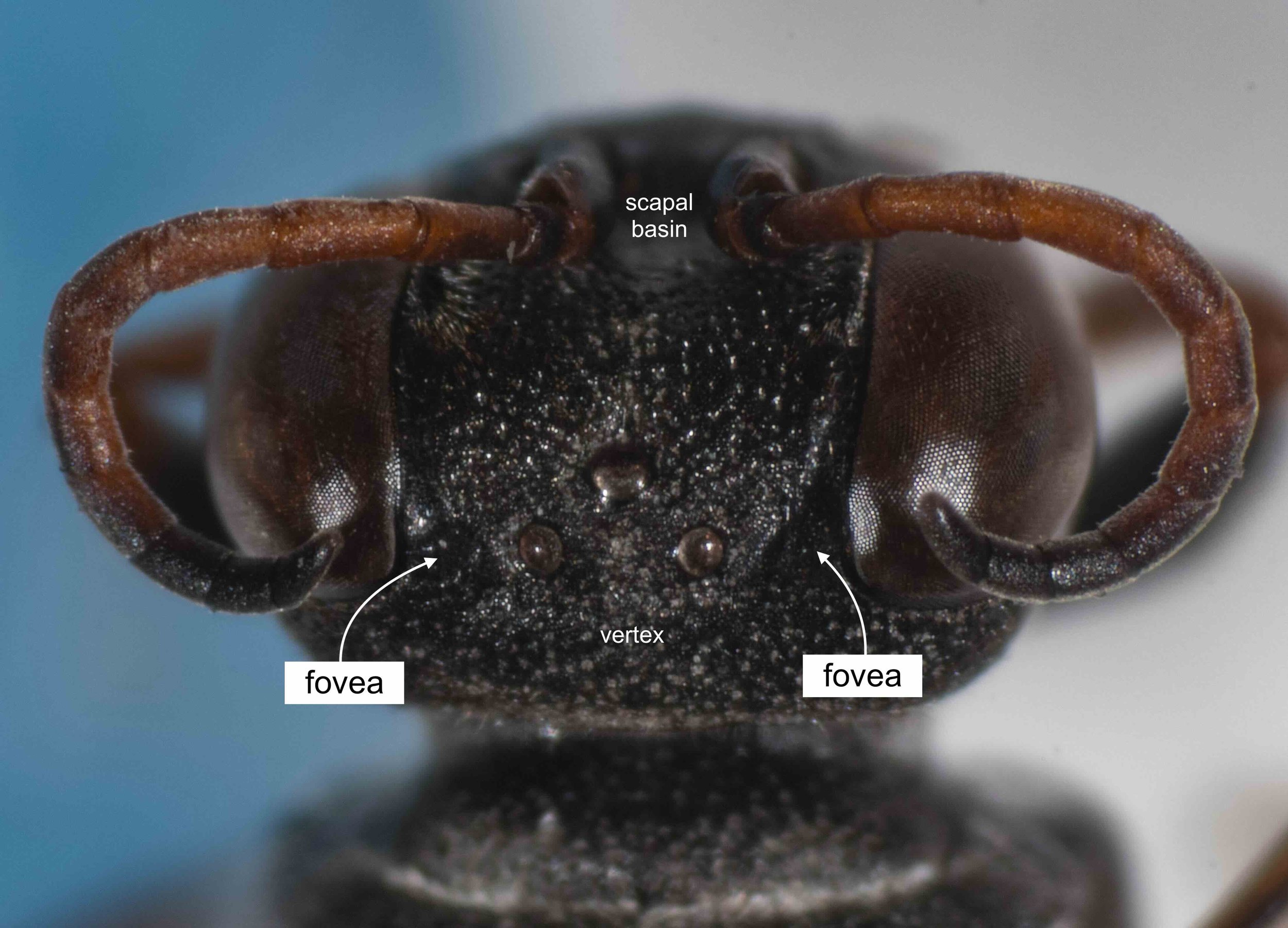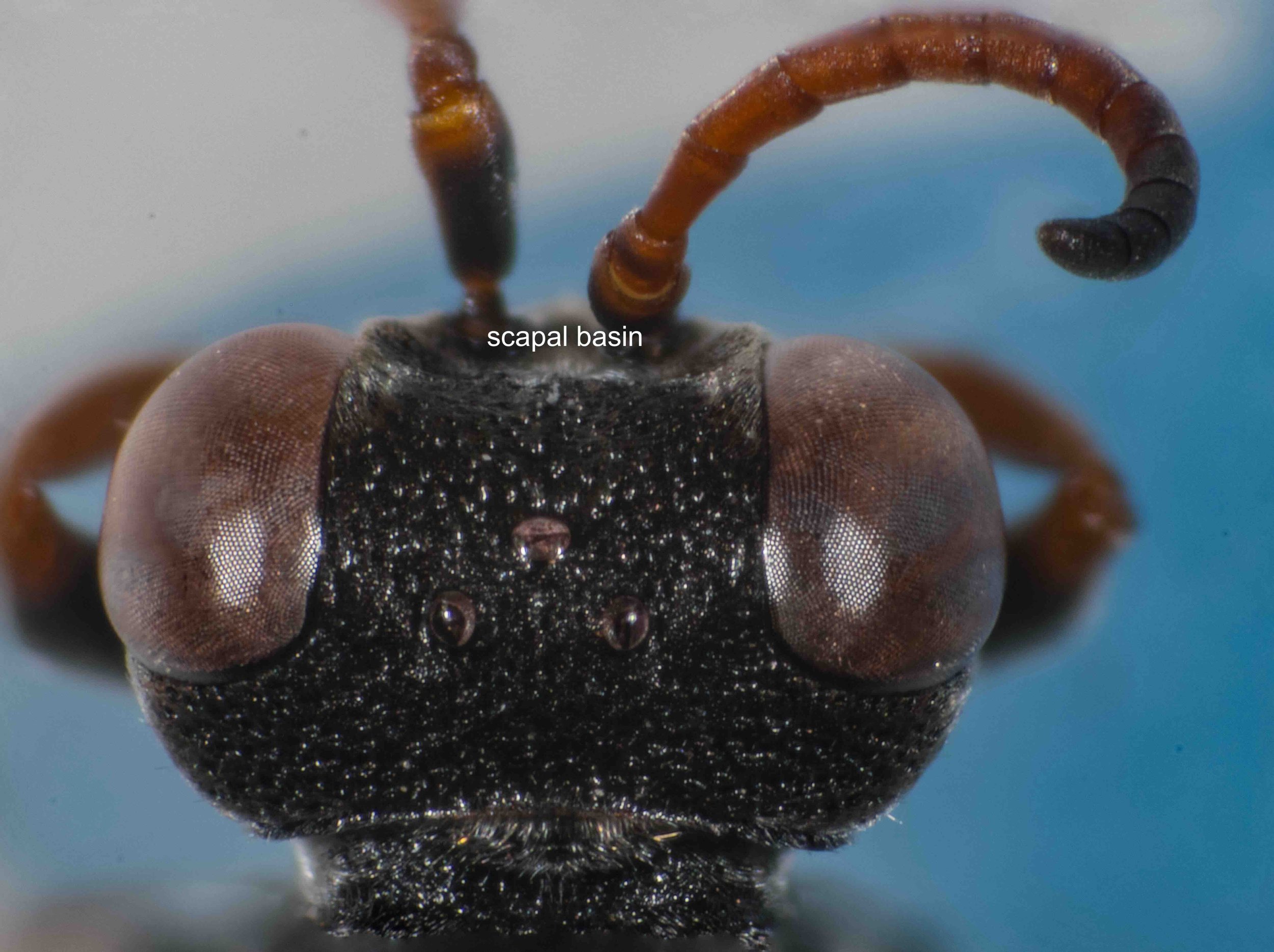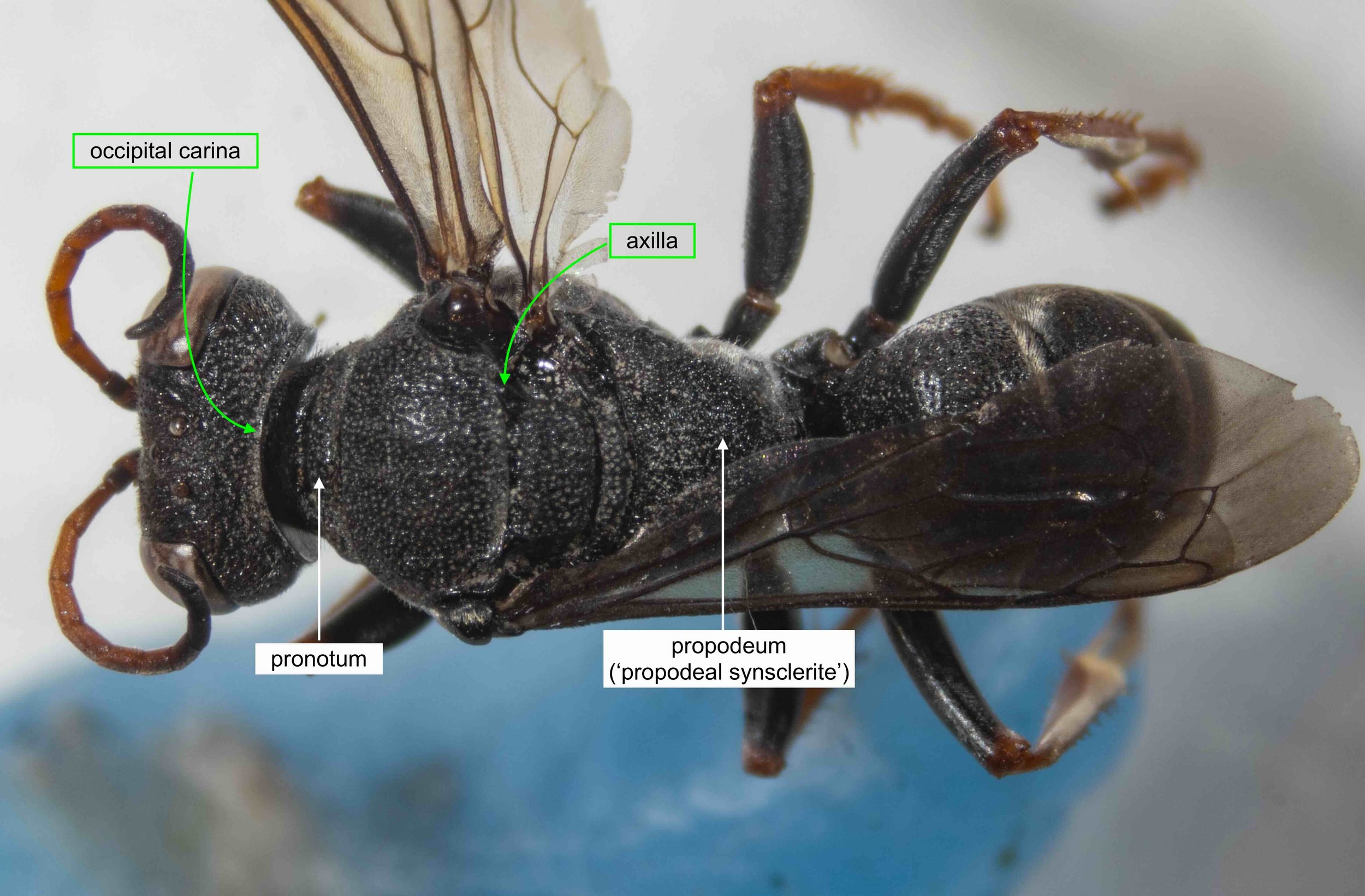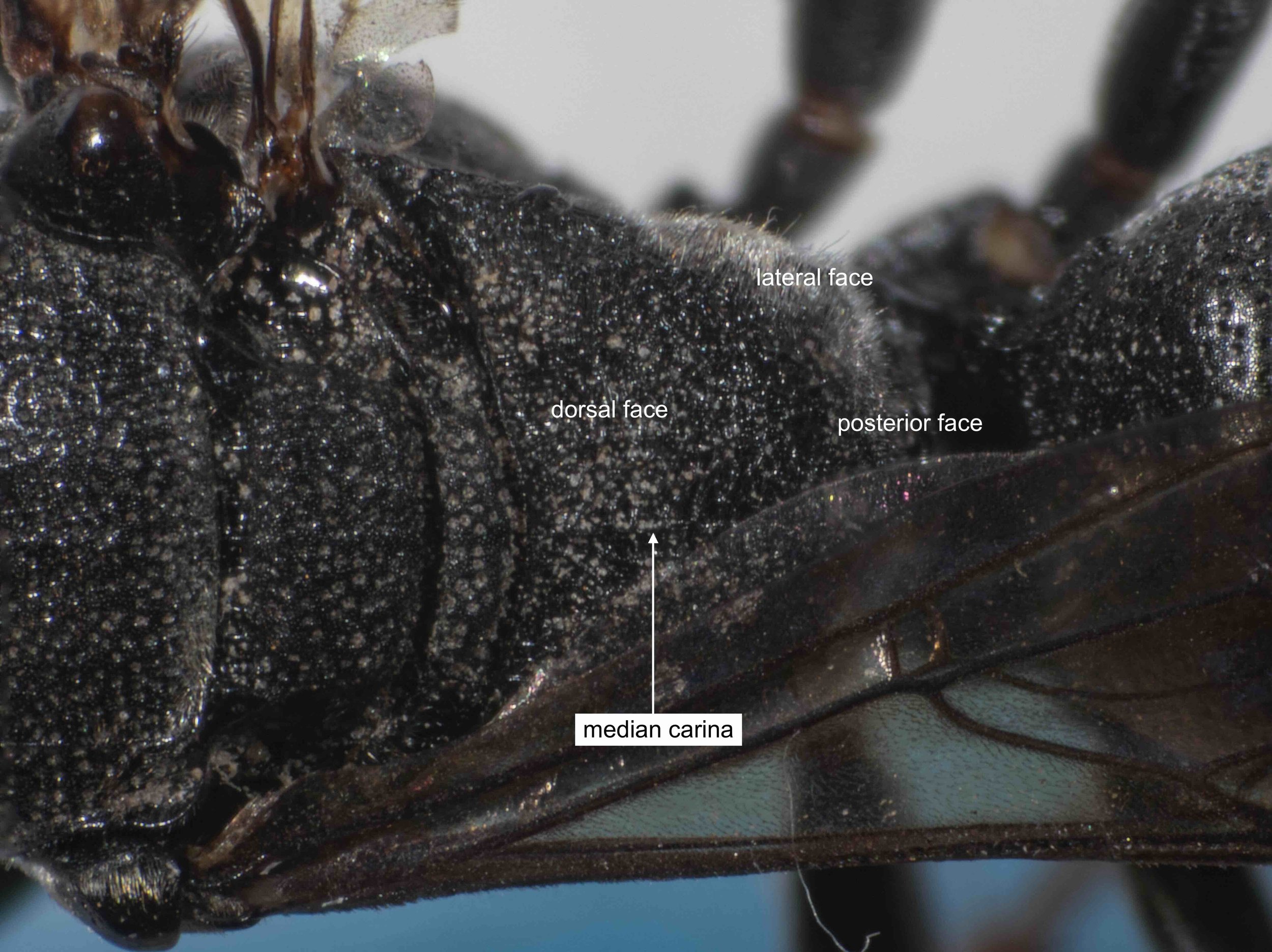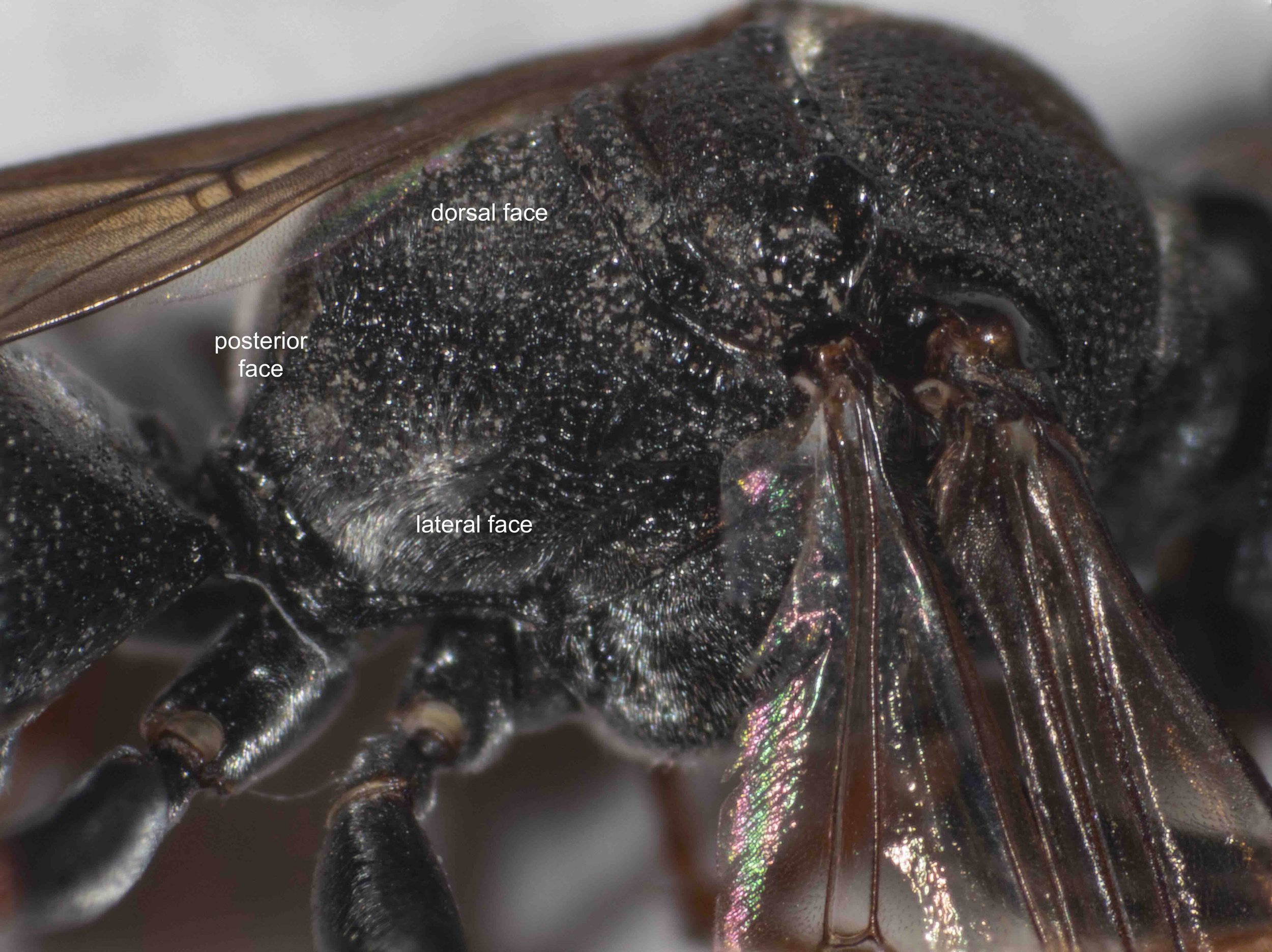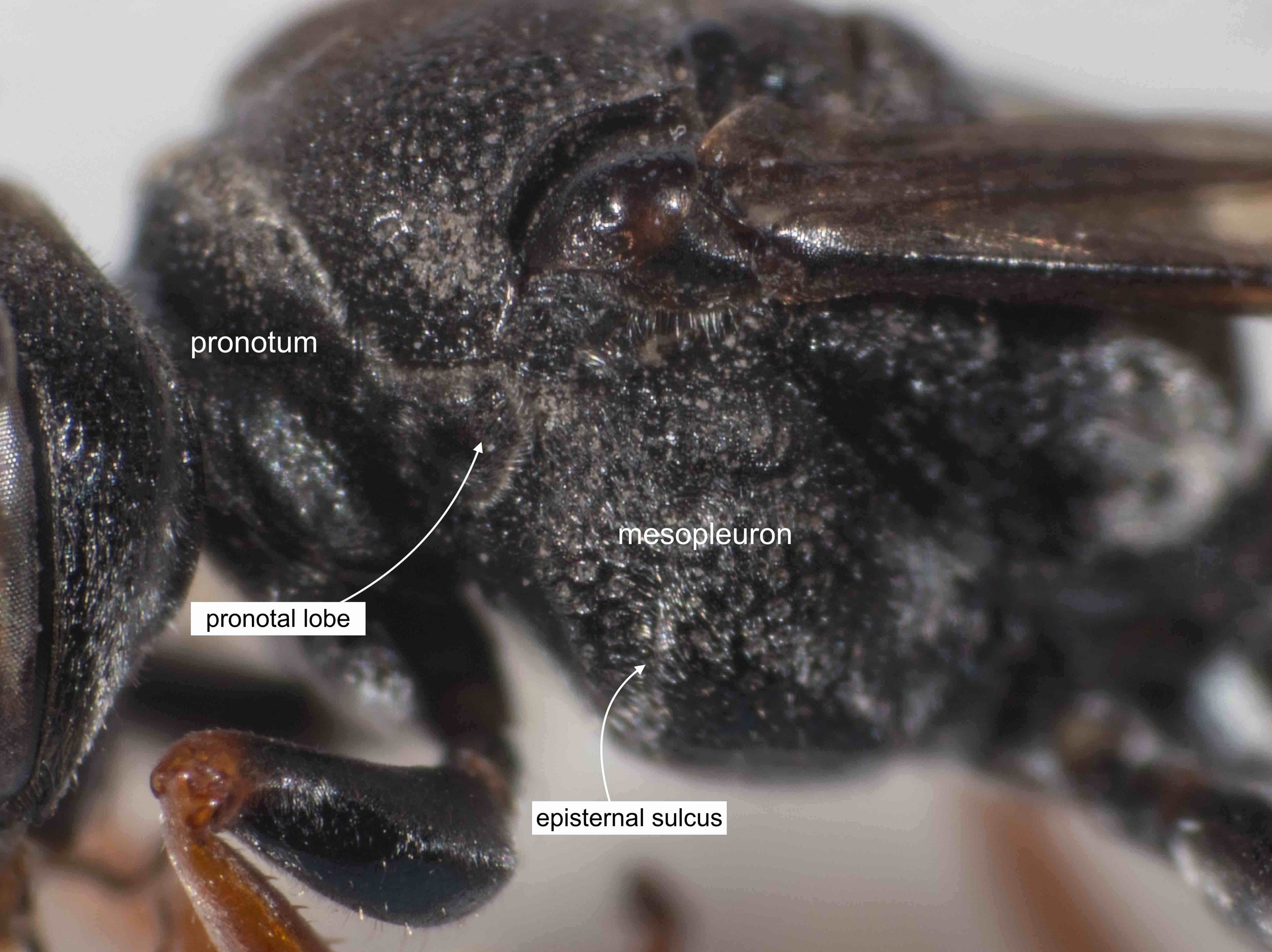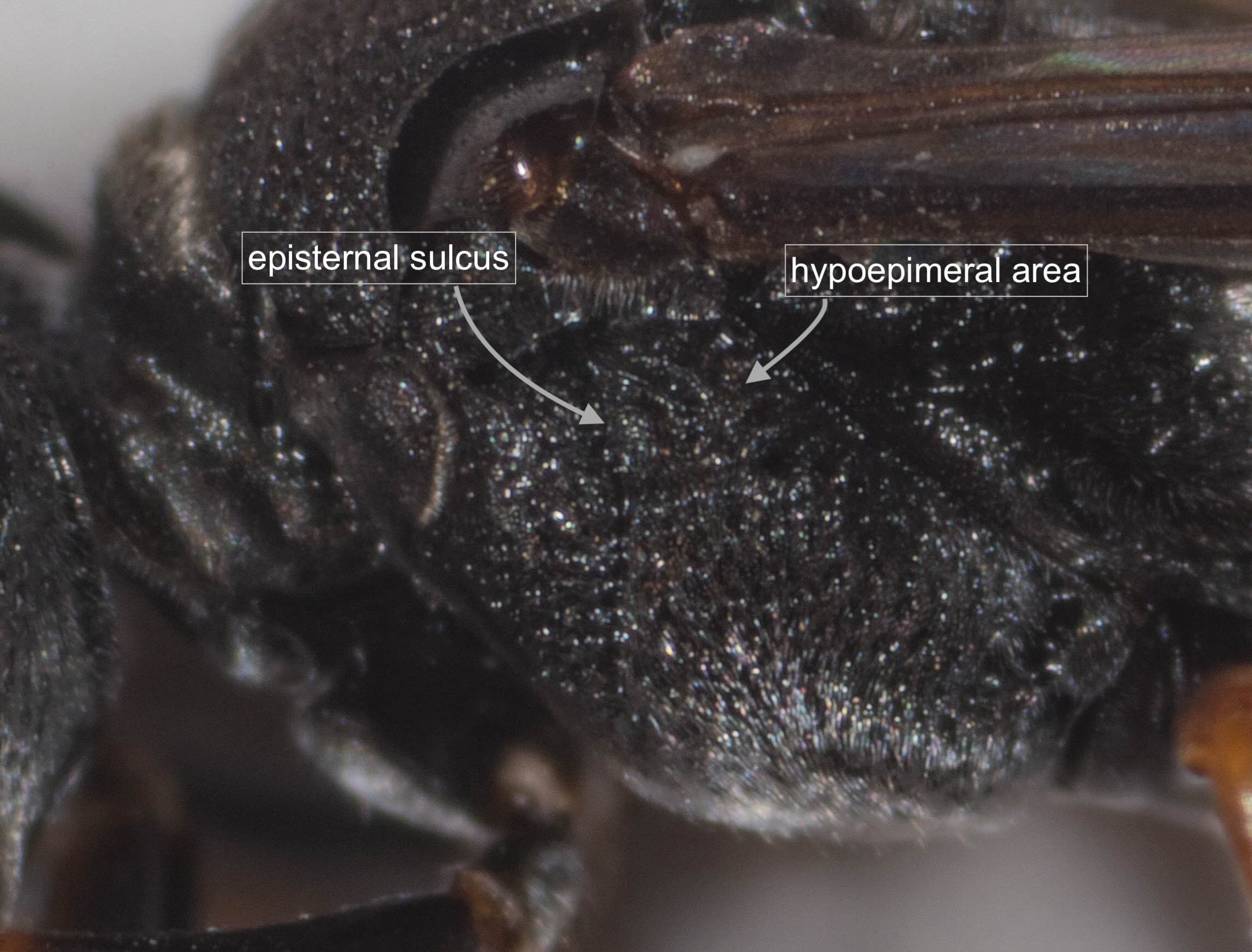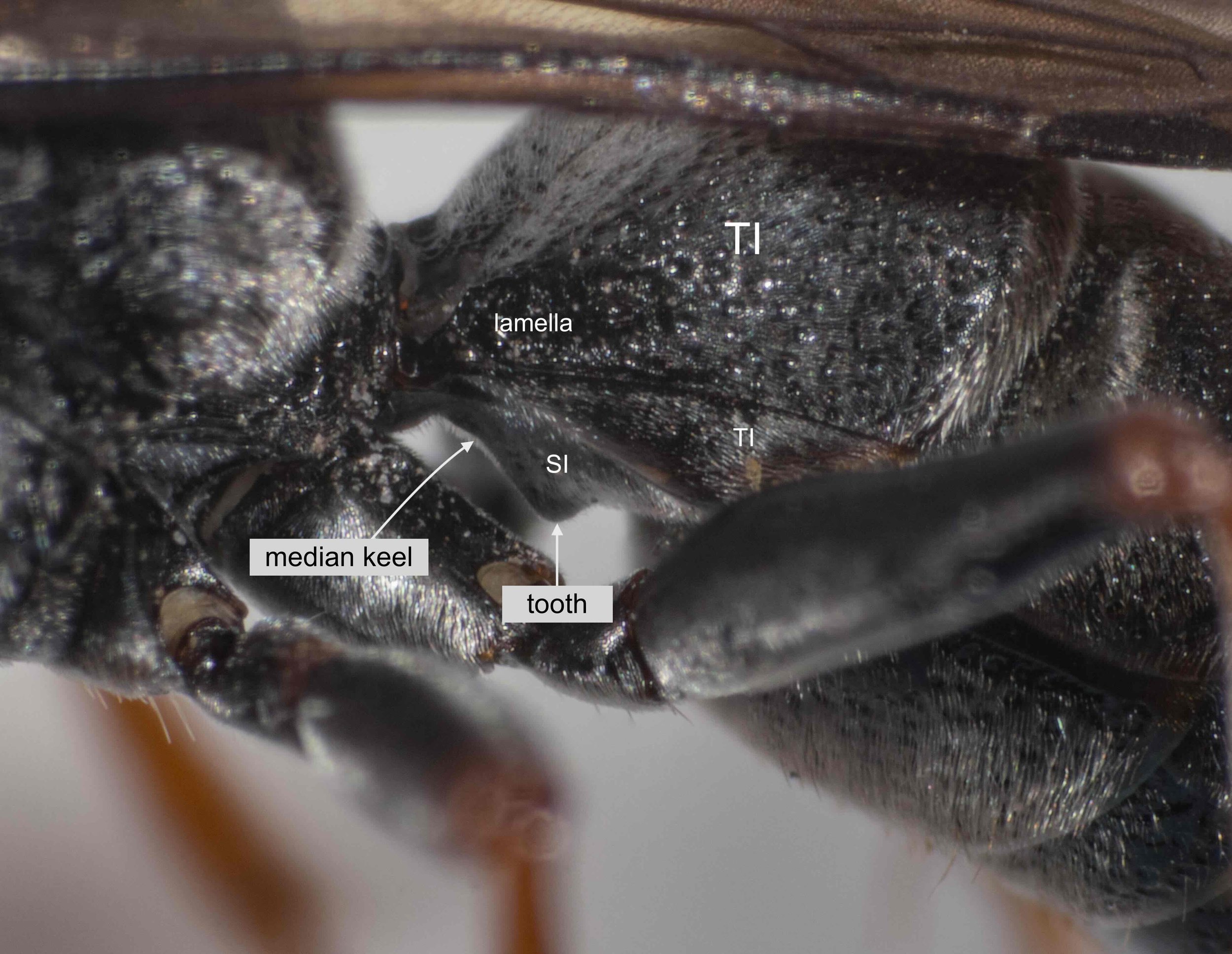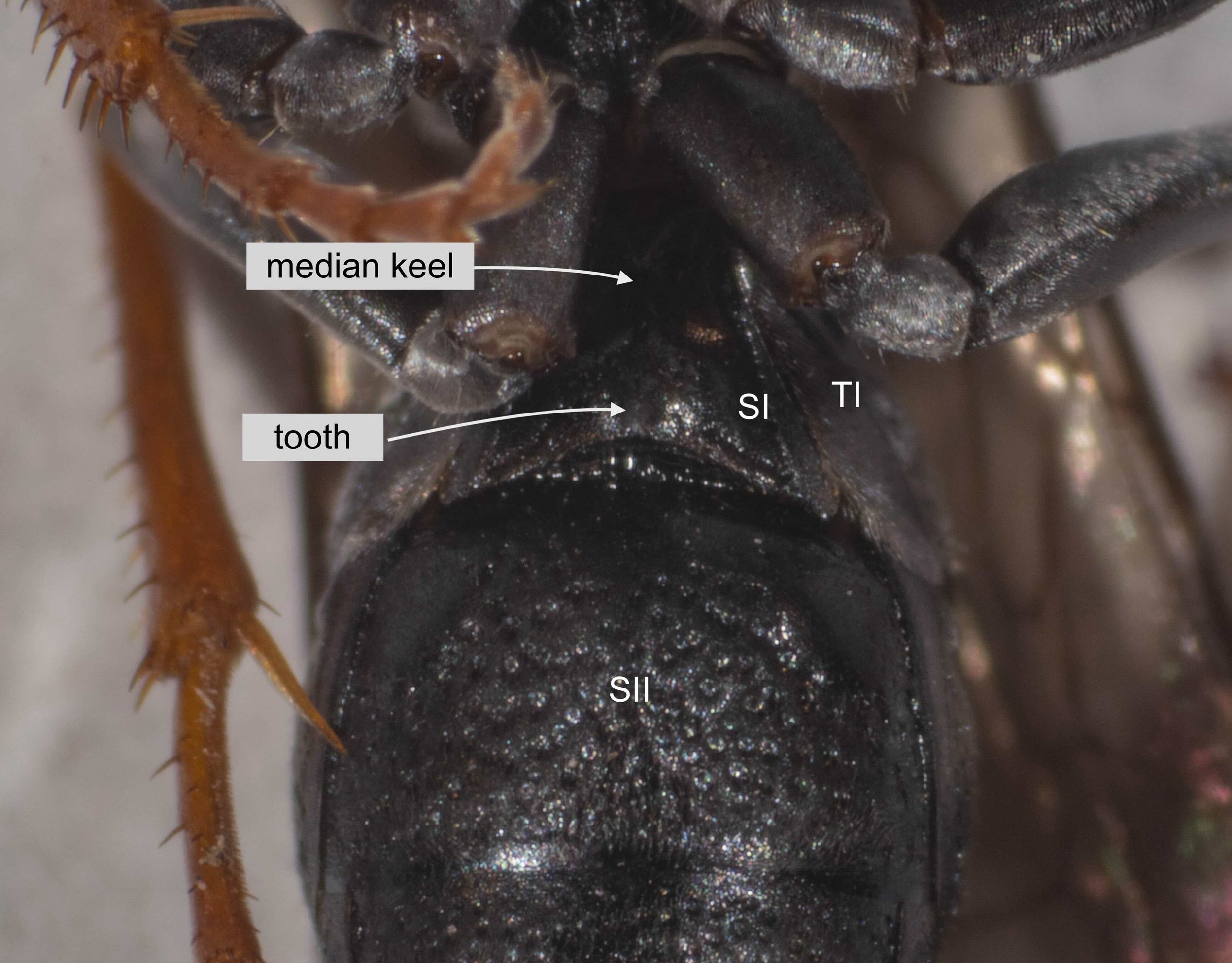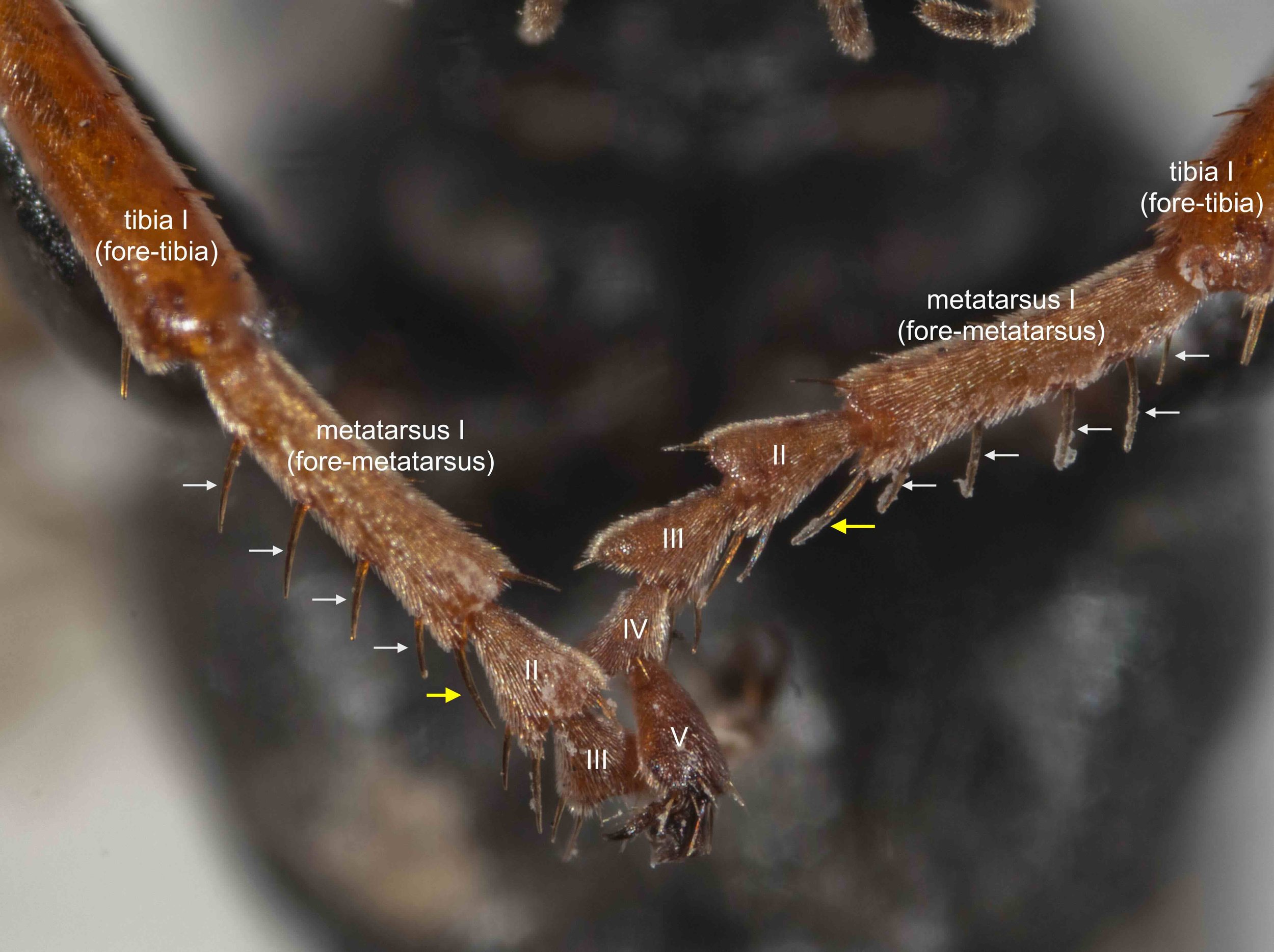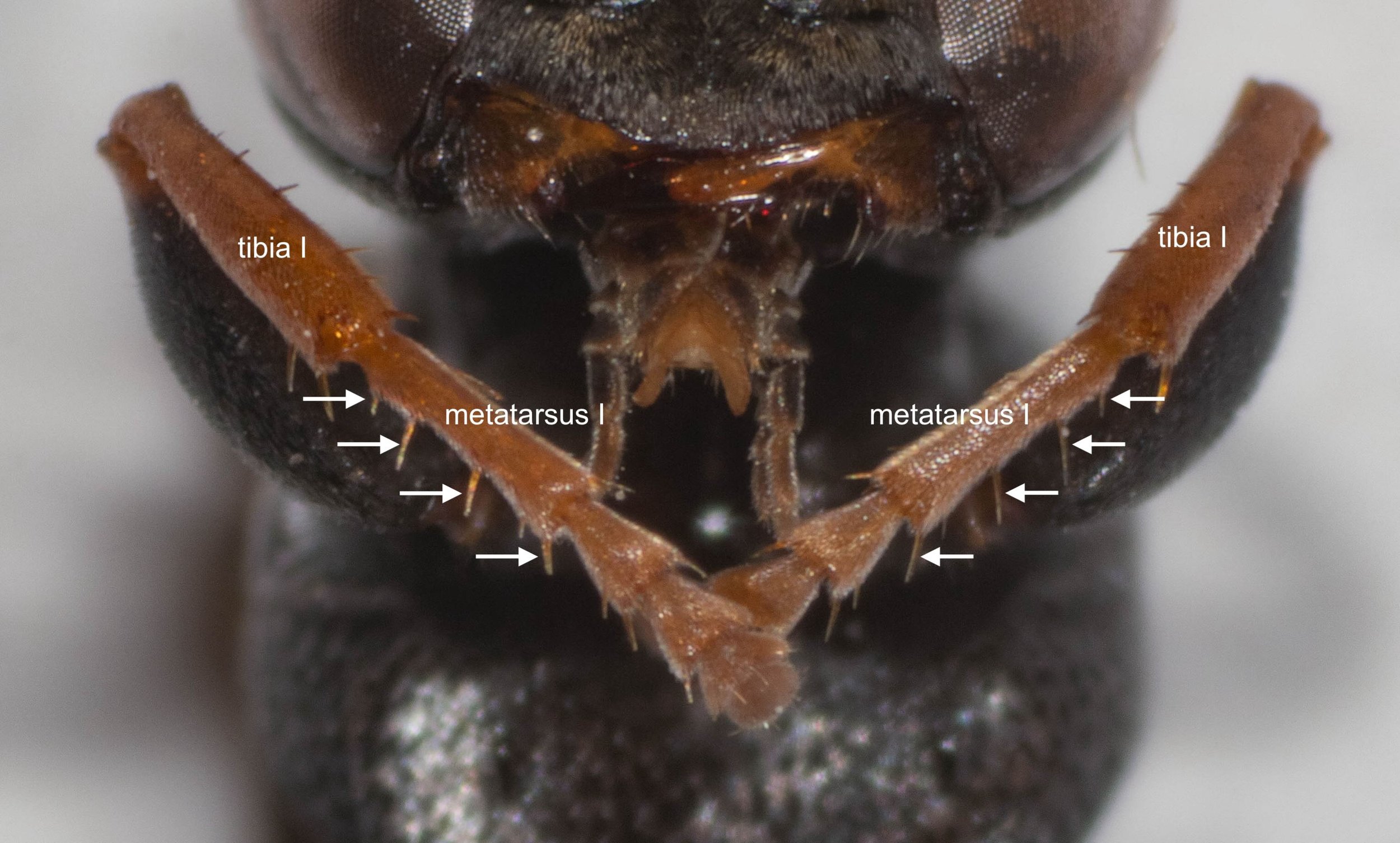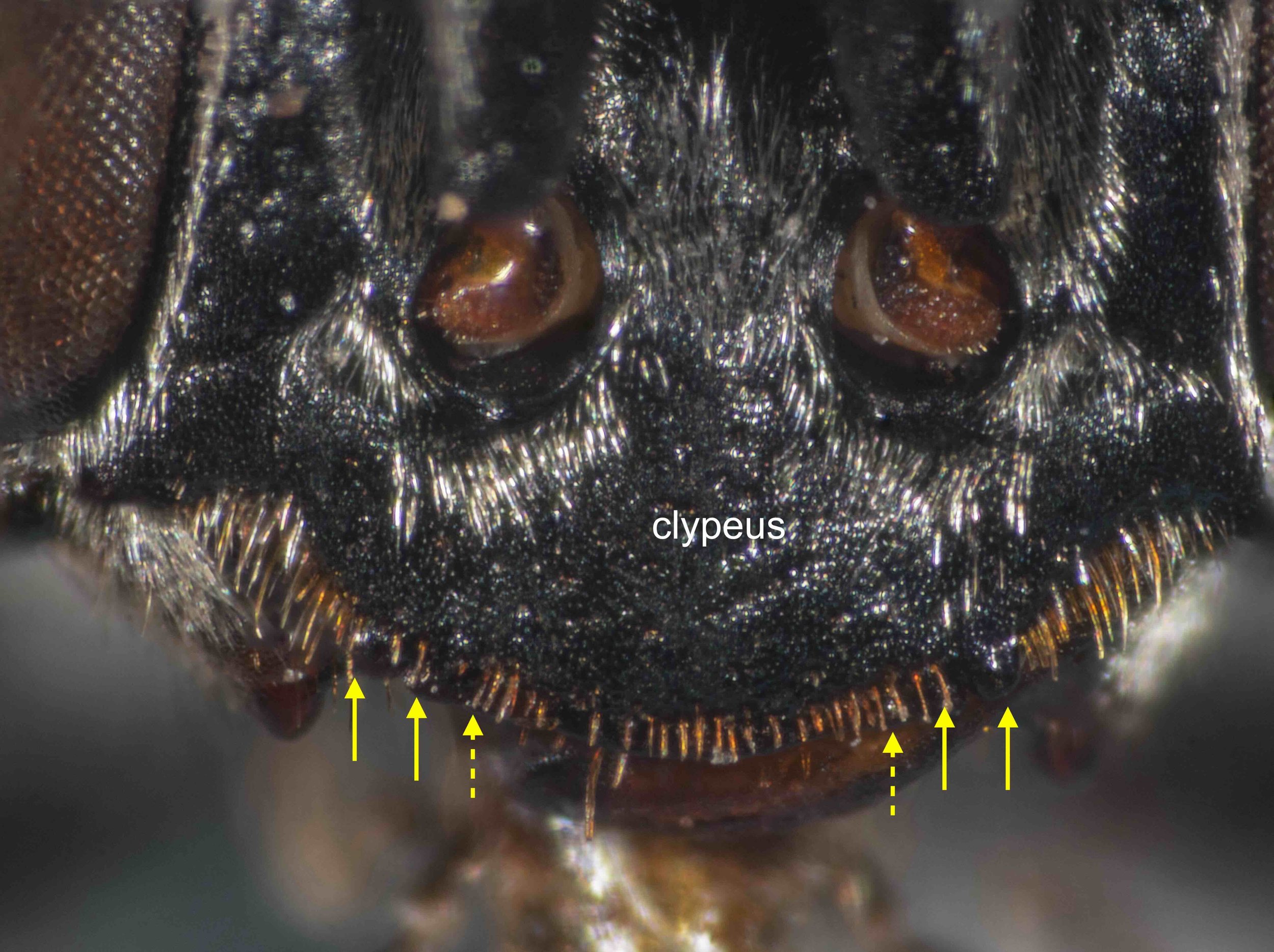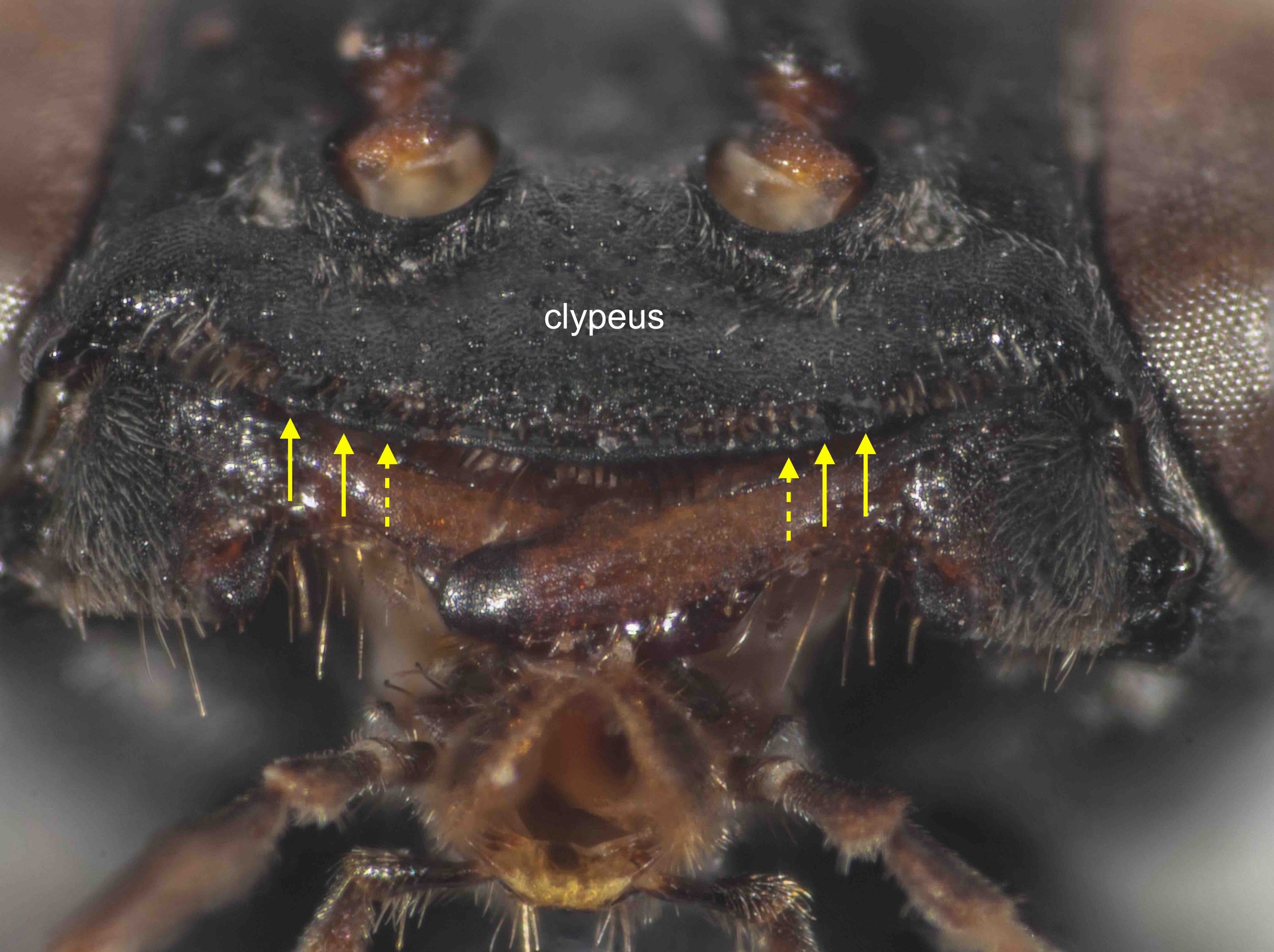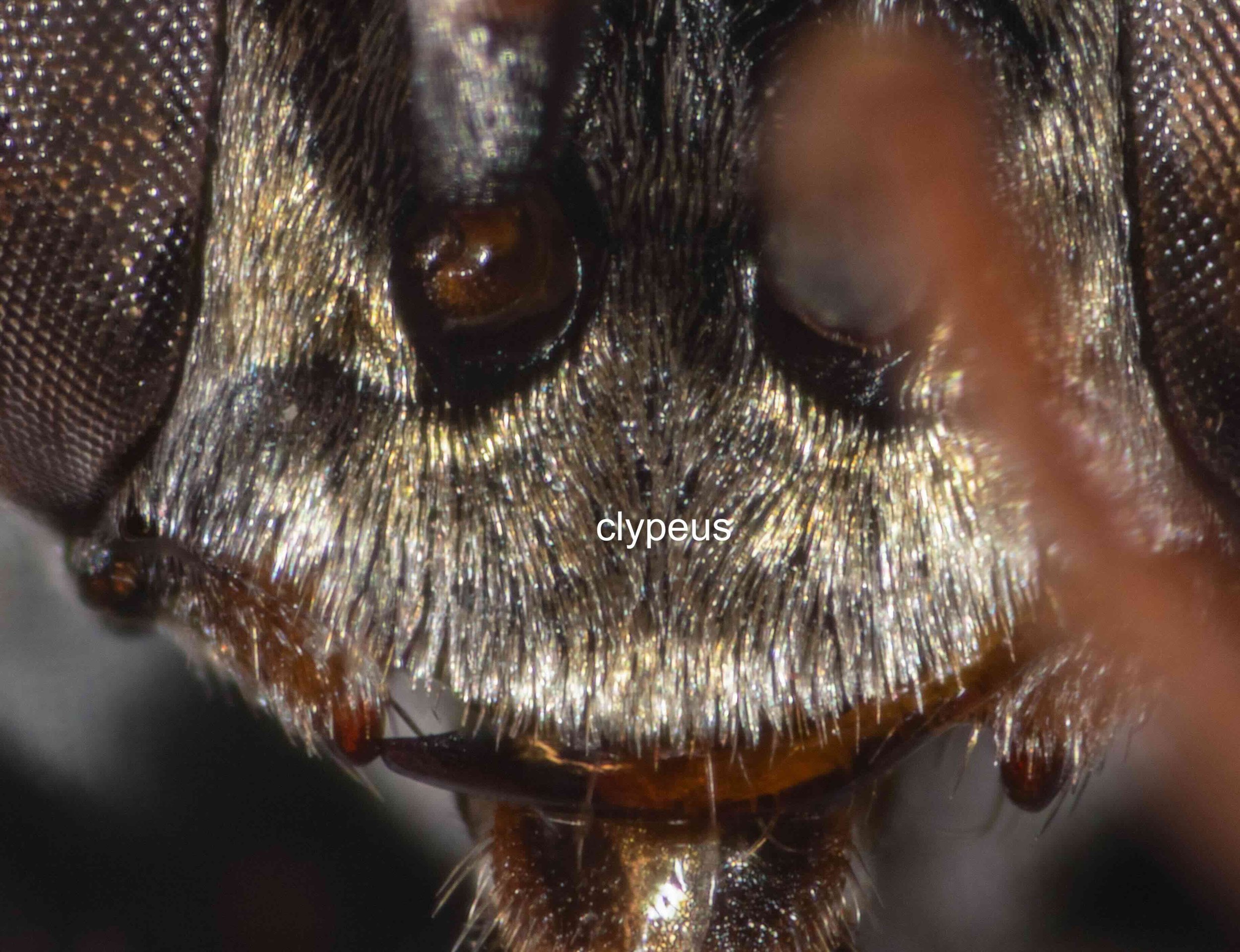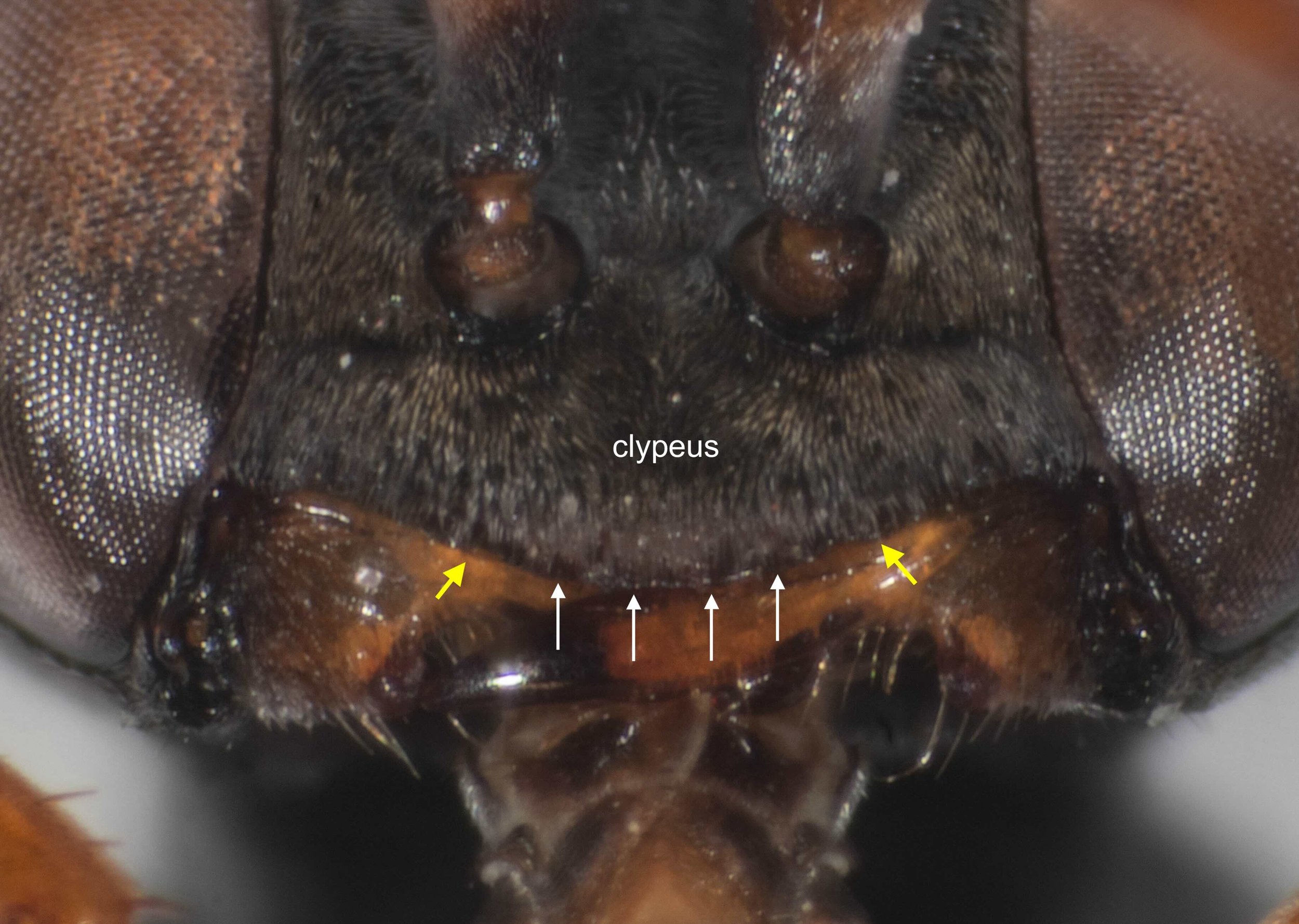Sphodrotes (CRABRONINAE: Miscophini)
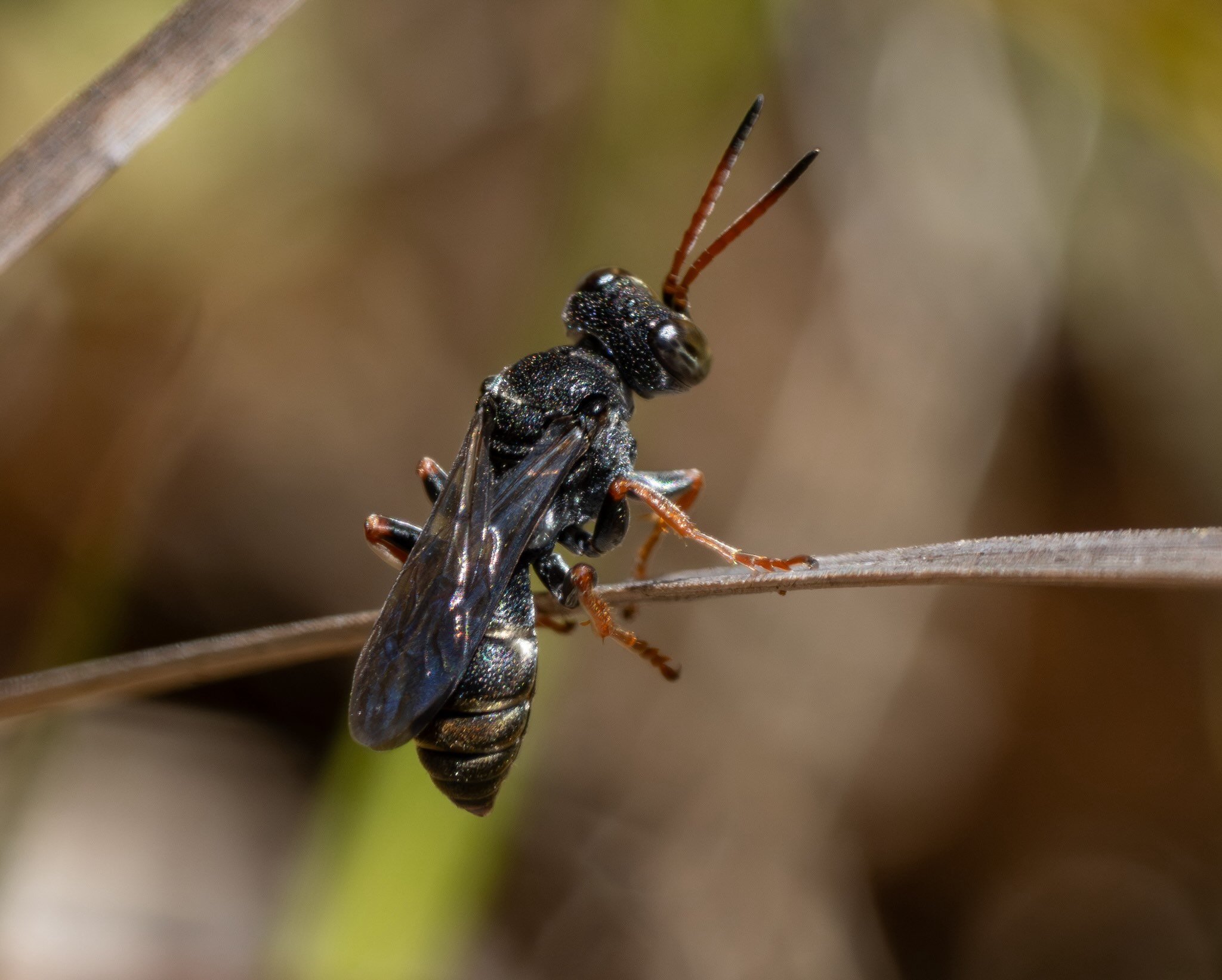
Workbook
These distinctive crabronids are a regular summer sight here in the forest, but this year their numbers seem even higher than usual. Reason enough to take a closer look at the genus … and to finally put a species names to our local representatives: Sphodrotes punctuosa
Uncommon & little-known wasps
Sphodrotes appear to be relatively rare wasps. For example, there are currently only 42 recognised sightings of Sphodrotes on iNaturalist – and 12 of those are mine.
Also, most museum holdings are relatively small. For example:
7 in the Australian Museum, all S. ordinaria from NSW
15 in the Queensland Museum, all S. ordinaria from QLD with the exception of 1 S. marginalis (collected in 1913)
just 1 in the Melbourne Museum, S. punctuosa (collected in 1914)
The Tasmanian Museum is one exception, with many collections from that state added in recent years bringing their records of Sphodrotes to 53. All are simply listed as ‘Sphodrotes’, but they are likely to be S. punctuosa, as that is the only species known from Tasmania (at least, at the time of Lomholdt’s paper).
The only published paper dealing with their biology is the work of Howard E. Evans which describes the nesting behaviour of S. nemoralis in Far North Queensland (Evans 1973).
A bit about behaviour
Our local Sphodrotes make their seasonal debut in mid-late November. Soon thereafter males become a common sight, patrolling the forest tracks in earnest. Each attempts to claim a small patch of ground, clearly on the lookout for females while chasing off intruders of all kinds … even butterflies.
Females choose concealed spots to dig their nests, typically under fallen leaves. Once the burrow is constructed the females become difficult to spot. When returning with prey, they typically disappear from sight in seconds. Although occasionally they will perch or land nearby and, if I’m quick enough, I get a look at their cargo.
Most of the Sphodrotes I see are males, either flying on patrol or perched on low vegetation.
They tend to pivot to and fro on the same perch, looking in all directions, before flying off again … and often returning to the same perch a short time later.
Occasionally I catch a female outside her burrow, grooming in the sun. Such photo opportunities are, however, quite rare. It’s normally the males that are sitting about on the vegetation.
Inspecting her chosen nest site … sandy soil beneath a layer of loose gravel, fallen leaves and twigs.
Excavation works proceed in relative obscurity. This is in stark contrast to the ‘out in the open’ approach of nest digging among some other crabronids (e.g. Cerceris, Bembix).
If I’m patient and watch a known burrow entrance, I may get a glimpse of the female returning with prey. Typically they dive into the open burrow beneath the leaf litter before I can get a good look … let alone a shot. This was my lucky day, as she landed outside before wrestling her large catch below ground.
Evans (1973) recorded Sphodrotes nemoralis in Far North QLD provisioning their nests with immature bugs (Pentatomoidea … stink bugs, etc). And it seems our local species is targeting similar prey.
Within 4 minutes she headed out again, quickly departing the area. Like many ground-nesting crabronids, Sphodrotes are susceptible to a variety of parasites and nest invaders. Avoiding detection is a priority – although a near impossibility.
And if I’m very (very!) lucky, I get to see a mating. It’s a quick affair. The male grabs hold of the female, there’s a quick tussle, and they separate. The male then goes back to patrolling while the female heads underground. I have witnessed this on several occasions but rarely managed to get my camera onto them in time. Last week I was quick enough to catch the action … just! The details are revealing.
I had just spotted this female land on the stick, when the male flew in and grabbed her. Note the much smaller head and body of the male … a size difference that is difficult to appreciate unless they’re coupled like this.
His mandibles are gripping her antennae, appearing to pull her head up … perhaps making it more difficult for her to scurry or fly away.
Escape she does, by throwing her whole body off the stick, although the coupling holds firm for a moment longer. Immediately after this shot they were separated … and the male was perched nearby, grooming.
Genus identification
Sphodrotes are distinctive wasps and are generally quite recognisable from field photos that show some or all of the following characters: head shape & texture, including eye shape & ocelli; forewing venation; texture of the thorax; shape of the abdomen/gaster.
Sphodrotes have:
- inner margins of eyes parallel, or slightly converging below
- a wide scapal basin (most)
Sphodrotes have:
- inner margins of eyes parallel, or slightly converging below
- a wide scapal basin (most)
Sphodrotes have:
- 3 submarginal cells in the forewing
- the second submarginal cell triangular and petiolate, or at least narrowed anteriorly (arrow)
- broad genae, so the head appears rectangular when viewed dorsally
- integument strongly sculpted, and usually pitted
Sphodrotes have:
- both recurrent veins (arrows) received by submarginal cell II (usually, with occasional exceptions)
Unlike many other wasps, Sphodrotes rarely display their wings in this way, so one has to be lucky to get field shots clearly showing forewing venation … making this a less useful feature for genus level ID.
Sphodrotes have:
- the mesopleuron sharply angled anteriorly (arrow)
That is, they look to have a square chest.
Sphodrotes have:
- integument strongly sculpted, and usually pitted
This coarsely sculptured integument is one of the most reliably visible clues to the genus.
For the full list of characters, and to compare Sphodrotes to other members of the subfamily (Crabroninae) and tribe (Miscophini), refer to the relevant notes pages:
Species identification
The genus Sphodrotes is endemic to Australia. There are currently only 12 described species … and before the work of Lomholdt (1983) there were just five.
Based on Lomholdt’s work, I’ve summarised the features that distinguish between species. As usual, I’ve emphasised characters that might be visible in field photos.
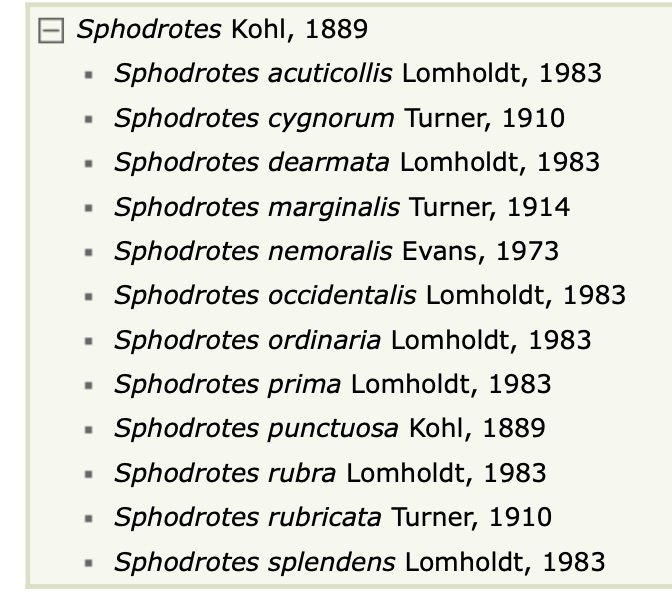
Extract from the Australian Faunal Directory (as of 1/1/2025) https://biodiversity.org.au/afd/taxa/Sphodrotes/checklist
It is worth noting Lomholdt’s assertions regarding geographic limits (Lomholdt 1983).
“Most species are restricted to relatively small geographic areas. Only rubricata and ordinaria display very extensive distributions. As judged from the available material, Sphodrotes species are rare.” (p. 87)
“Female punctuosa might be misidentified as occidentalis, but the distribution areas of the two are widely separated, punctuosa occupying SE Australia incl. Tasmania, while occidentalis occurs in SW Australia.” (p. 114)
Location is, therefore, an important element distinguishing between some species … yet with so few specimens in collection, the true range of some species must remain an open question. Perhaps, in time, iNaturalist sightings will provide further insights.
Sphodrotes punctuosa
With three specimens of our local species in hand, I can take a close look at the various characters used to distinguish between species. Of particular importance are the body colour and pilosity, facial texture, shape of the propodeum, and clypeus shape.
Our local species agrees with descriptions of Sphodrotes punctuosa. In particular:
S. punctuosa is the only species listed for our region. The widespread species S. ordinaria is a similarly coloured wasp, but it hasn’t been recorded south of Sydney. Importantly, however, I’m not relying on location alone to exclude this east coast species.
S. punctuosa and S. ordinaria have distinctly different shape to the propodeum (see species summary table above for description of S. ordinaria).
S. occidentalis is a similar looking wasp. Black gaster, black femora, strong punctation. However, Lomholdt (1983) emphasises the large genae and strongly raised occipital carina of S. cygnorum … and so by extension, S. occidentalis. The author also explicitly differentiates these two species on the basis of their highly disparate locations. Good enough for me!
As a further test, I have compared the full description of S. punctuosa with my three specimens. For each of the characters that I’m able to image, they match. The relevant excerpts from Lomholdt’s (1983) description of S. punctuosa (pp 98, 101) are included in the gallery below (in italics).
Sphodrotes punctuosa males:
Differing from females in …
Smaller head-body length (8 – 10mm); longer antennae
Note also that, as in many crabronids, males have an additional flagellar segment (11, cf. 10 in females) and an additional visible segment in the gaster (7, cf. 6 in females).
Sphodrotes species:
“Forewings with three submarginal cells of which the second is petiolate. Both recurrent veins received by the second submarginal cell, or the first being interstitial, or even joining first submarginal cell ni single specimens.” p.87
Sphodrotes punctuosa females:
“Wings slightly infumate.”
Sphodrotes punctuosa females:
“Facial sculpture double, consisting of deep punctures separated by shining, finely and densely punctate interstices less than their diameter. Lower face with silvery pubescence of varying density. Frontal line absent or very indistinct.“
Sphodrotes punctuosa females:
“Facial sculpture double, consisting of deep punctures separated by shining, finely and densely punctate interstices less than their diameter. Lower face with silvery pubescence of varying density. Frontal line absent or very indistinct.“
Sphodrotes species:
“Mandibles with externoventral notch, proximally delimited by a blunt tooth.” (p. 87)
Sphodrotes punctuosa females:
“Mandibles densely pubescent proximally, median part ferrugineously amber, apex black to dark ferrugineous.”
Sphodrotes species:
“Pronotum short. Axillae shining smooth.”
“Propodeal synsclerite: Dorsal enclosure only indicated by a shallow, indistinctly pitted, groove.” (p.87)
Sphodrotes punctuosa females:
“Propodeum. Dorsal face with a weak, median carina (absent in some specimens), remaining surface strongly reticulate. Posterolateral areas with dense, silvery pubescence, teeth absent or only slightly indicated. Lateral faces coarsely striate medially. Posterior face with superficial, transverse striation.”
Sphodrotes punctuosa females:
“Propodeum. Dorsal face with a weak, median carina (absent in some specimens), remaining surface strongly reticulate. Posterolateral areas with dense, silvery pubescence, teeth absent or only slightly indicated. Lateral faces coarsely striate medially. Posterior face with superficial, transverse striation.”
Sphodrotes species:
“One or two posterolateral prominences usually present, less pronounced in males than in females.”
Sphodrotes punctuosa females:
“Posterolateral areas with dense, silvery pubescence, teeth absent or only slightly indicated. Lateral faces coarsely striate medially. Posterior face with superficial, transverse striation.”
Sphodrotes punctuosa females:
“Thorax, incl. pronotal lobes black, strongly and densely punctate, punctation on scutum not as strong as that of frons, interstices even, finely punctate.” “Anterodorsal mesopleuron very strongly sculptured, punctures pit-like. Episternal sulcus deep.” “Entire mesopleuron with thin greyish-white pubescence.”
Sphodrotes punctuosa females:
“Anterodorsal mesopleuron very strongly sculptured, punctures pit-like. Episternal sulcus deep. Hypoepimeral area with coarse, reticulo-striate sculpture. Entire mesopleuron with thin greyish-white pubescence.”
Sphodrotes species:
“Tergum 1 with a laterobasal, strongly raised, almost angularly projecting lamella. Sternum 1 (except in prima) with a median vault or carina terminating in a compressed tooth.” p.87
Sphodrotes punctuosa females:
“Sternum I with indistinct median keel, posterior tooth rather weak.”
A closer look at the clypeus
The shape of the clypeus is reasonably consistent across the genus.
Sphodrotes genus description (Lomholdt 1983):
“Female clypeal synsclerite (i.e. clypeus + lateroclypeus) with a wide median, slightly arcuately convex lobe usually slightly emarginate medially, three small rounded lateral teeth or nodules usually present. Median lobe and lateral teeth are strongly reduced in males.” p. 86
However, there are differences between species as highlighted by the various figures in Lomholdt’s paper. As far as I can discern, my specimens are a good match for Sphodrotes punctuosa.
Sphodrotes punctuosa females:
“Clypeal outline (Fig. 31), the three lateral teeth distinct, median emargination very shallow or absent.”
The arrows indicate the lateral teeth, with the innermost (dotted arrow) difficult to see beneath the fringing setae.
Sphodrotes punctuosa females:
“Clypeal outline (Fig. 31), the three lateral teeth distinct, median emargination very shallow or absent.”
The arrows indicate the lateral teeth, with the innermost (dotted arrow) difficult to see.
Bits & pieces
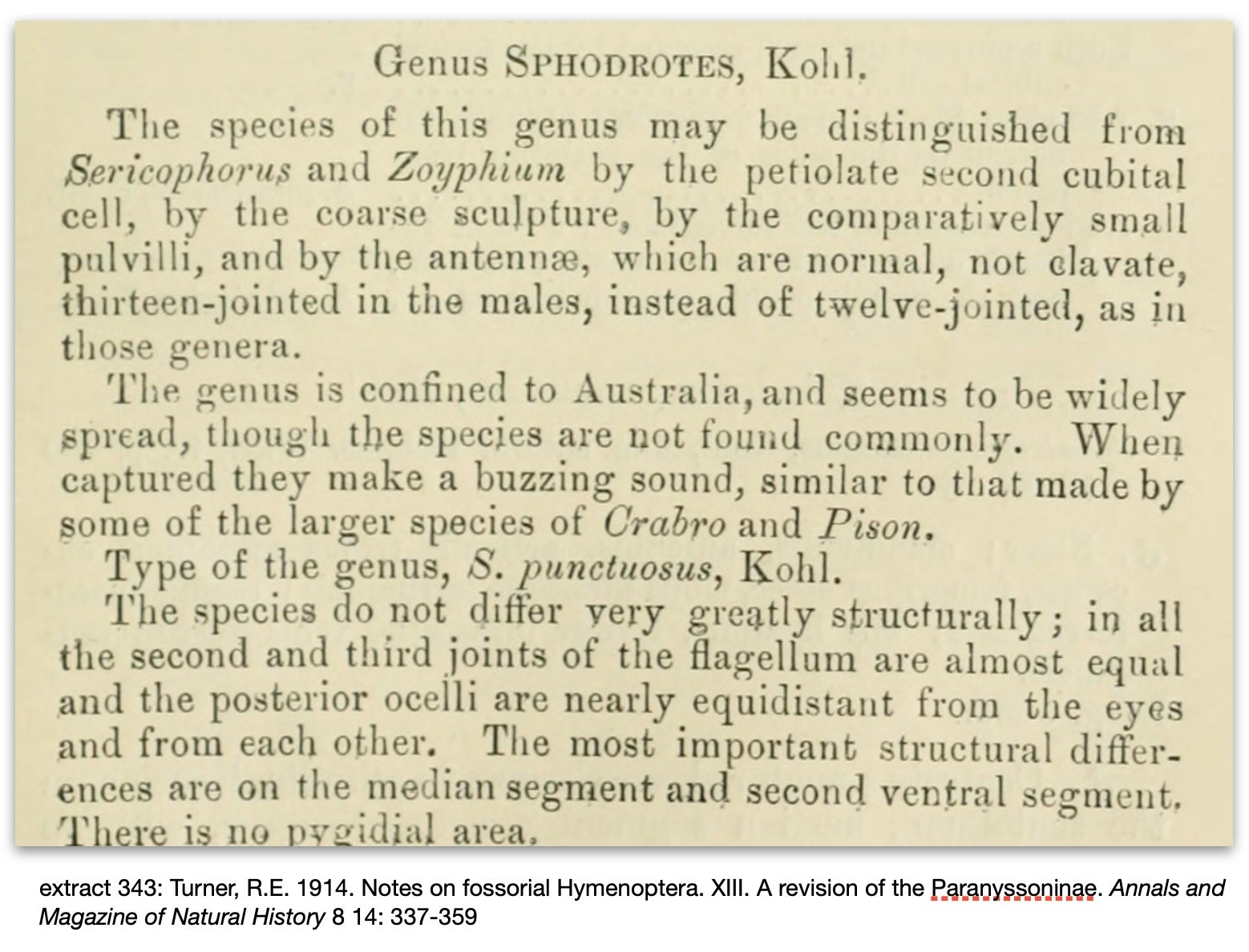
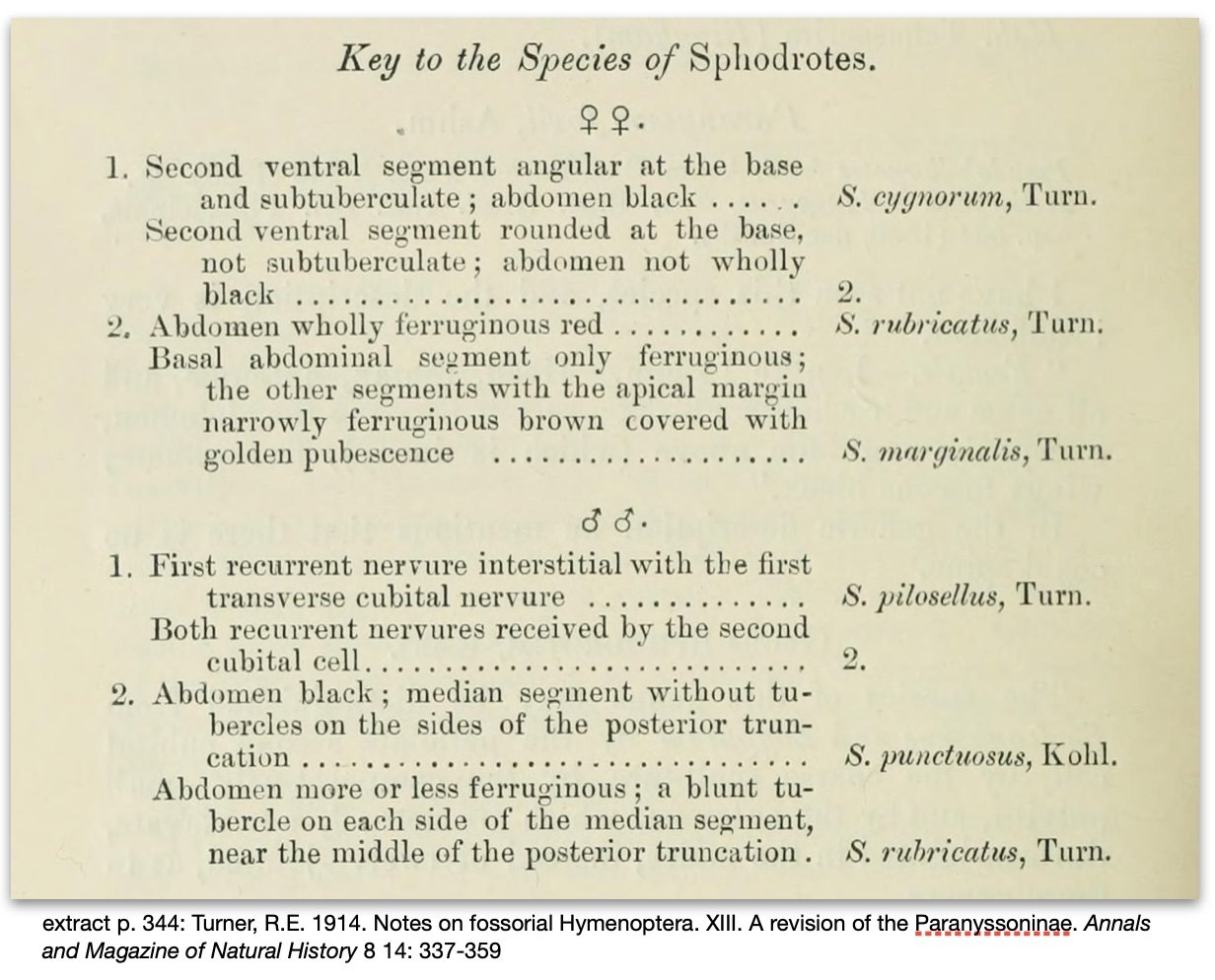
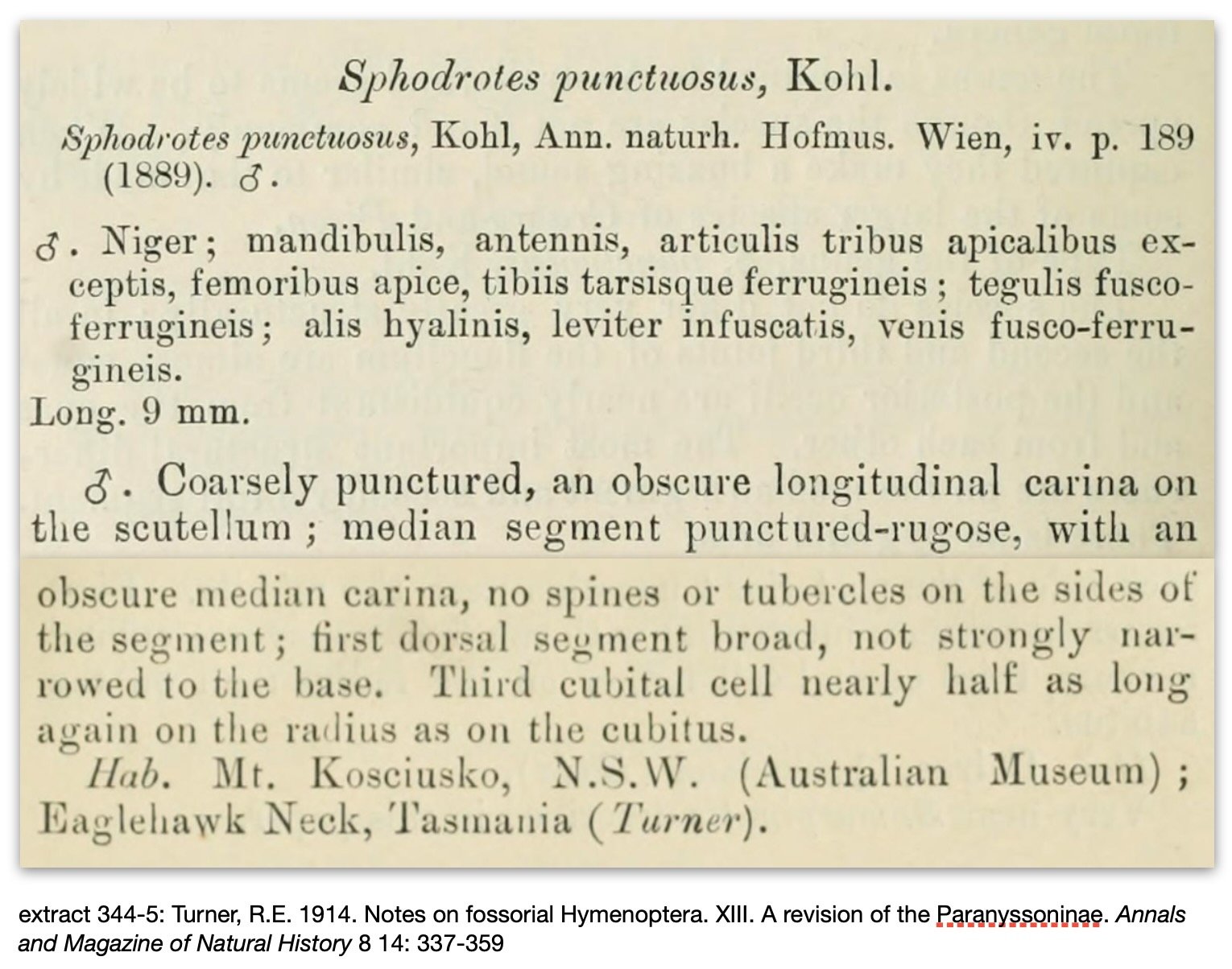
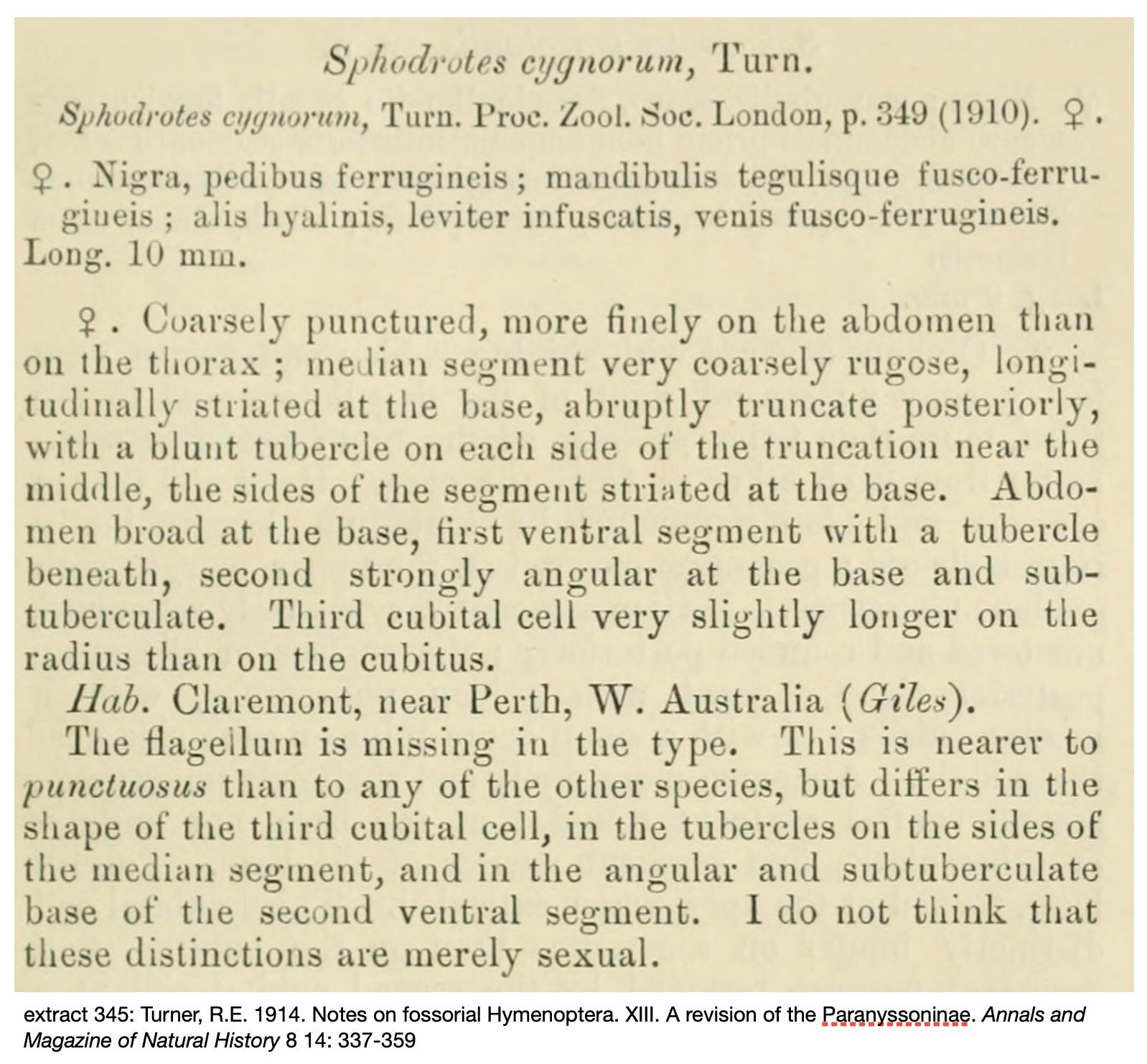


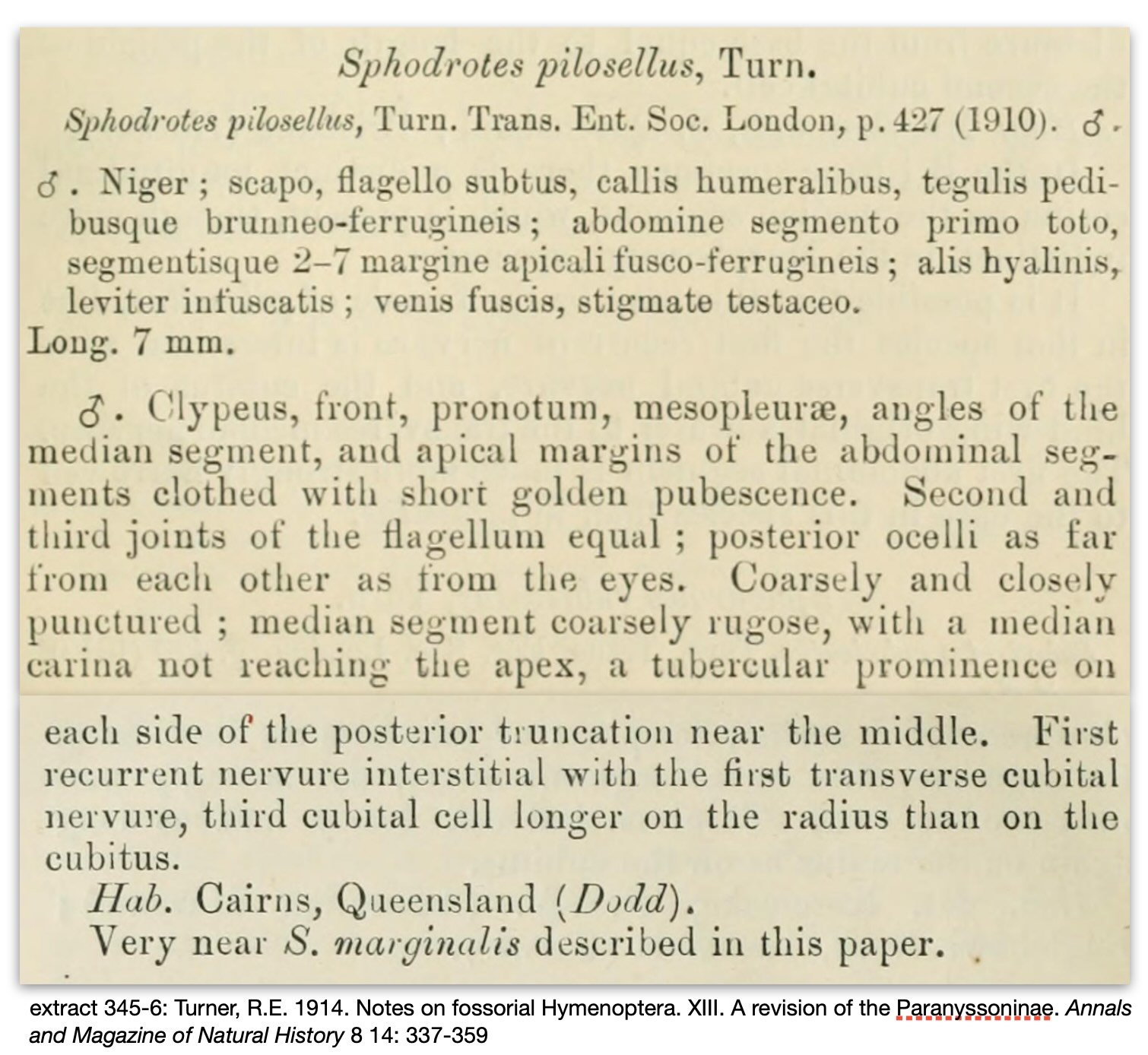



Specimen details
- 2301G: female collected 20th Jan, 2023
- 2301L: female collected 24th Jan, 2023
- 2501A: male collected 2nd Jan, 2025
References
Bohart, R.M. & Menke, A.S. 1976. Sphecid Wasps of the World: A generic revision. University of California Press, Berkeley.
Evans, H.E. 1973. Observations on the nests and prey of Sphodrotes nemoralis sp.n. (Hymenoptera: Sphecidae). Journal of the Australian Entomological Society 12: 311-314 … freely available via link on Wikispecies page
Kohl, F.F. 1889. Neue Gattungen aus der Hymenopteren-Familie der Sphegiden. Annalen des Naturhistorischen Museums in Wien 4: 188-196
Lomholdt, O. 1983. A revision of Sphodrotes Kohl, 1889 (Hymenoptera, Sphecoidea, Larridae). Steenstrupia 9: 85-116 … freely available via link on Wikispecies page
Turner, R.E. 1910. Additions to our knowledge of the fossorial wasps of Australia. Proceedings of the Zoological Society of London 1910: 253-356
Turner, R.E. 1914. Notes on fossorial Hymenoptera. XIII. A revision of the Paranyssoninae. Annals and Magazine of Natural History 8 14: 337-359
This is a workbook page … a part of our website where we record the observations and references used in making species identifications. The notes will not necessarily be complete. They are a record for our own use, but we are happy to share this information with others.
